
How the pandemic has shaped the way young teens think and act. Hint: They are more anxious and have less sex






How the pandemic has shaped the way young teens think and act. Hint: They are more anxious and have less sex




Think nature documentaries, Lassie or good old Scooby-Doo, a new study suggests.
Dogs are most engaged when watching videos that feature other animals, according to a new study published recently in the journal Applied Animal Behavior Science.
The study is part of an overall effort to develop better ways to check
canine vision, something that the researchers say is sorely lacking in veterinary medicine.
“The method we currently use to assess vision in dogs is a very low bar. In humans, it would be equivalent to saying yes or no if a person was blind,” said researcher Freya Mowat, a professor at the University of Wisconsin-Madison's School of
Based on more than 1,200 responses, researchers concluded that video content featuring animals was the most popular among dogs
Veterinary Medicine.
“We need more sensitive ways to assess vision in dogs, using a dog eye chart equivalent,” Mowat added in a university news release. “We speculate that videos have the potential for sustaining a dog's attention long enough to assess visual function, but we didn't know what type of content is most engaging and appealing to dogs.”
To figure out what canines like to watch, Mowat created a web-based questionnaire for dog owners around the world to report their four-legged friends' TV habits.
The survey included questions about the types of screens in a home, how dogs interact with the screens and the kinds of content that most engaged them. Owners also described how their dogs behaved while watching videos.
Unlike humans, data show that dogs are commonly active when watching TV — running, jumping, vocalizing and tracking the action on the screen, rather than lying down or sitting as they watched.
Dog owners also had the option of showing their dog four short
videos featuring subjects of possible interest: a panther, a dog, a bird and road traffic.
Based on more than 1,200 responses, researchers concluded that:
• Video content featuring animals was the most popular among dogs
• Other dogs were by far the most engaging subjects to watch
• Humans weren't that interesting, ranking ninth out of 17 categories
• Age and vision were related to how much a dog interacted with a screen
• Sporting and herding dogs were more likely than other breeds to engage with any type of TV
• Movement on screens was a strong draw for dogs' attention
These results will be used to develop video-based methods that can track changes in visual attention as dogs age, Mowat said.
“We know that poor vision negatively impacts quality of life in older people, but the effect of aging and vision changes in dogs is largely unknown because we can't accurately assess it,” Mowat said. “Like people, dogs are living longer, and we want to make sure we support a healthier life for them as well.”
Understanding how a dog's vision ages also could help the humans who share their home, Mowat added.
“Dogs have a much shorter lifespan than their owner, of course, and if there are emerging environmental or lifestyle factors that influence visual aging, it might well show up in our dogs decades before it shows up in us,” Mowat explained. “Our dogs could be our sentinels the canine in the proverbial coal mine.”




As the region’s leader in robotic-assisted surgery Crouse Health is the only area hospital to offer the latest, minimally invasive technique for prostate surgery using a single, small incision. The da Vinci SP system uses advanced technology designed for access to tissue in the body with greater precision and enhanced mobility.

A pioneer in robotic-assisted surgery, urologist Po Lam, MD, is the first and only surgeon in the region to utilize the da Vinci Single Port robotic system for prostate removal. His experience with the SP system places him in the top tier* of robotic surgeons in the U.S. using this innovative technology. Intuitive Surgical







See interview with Po Lam, MD, and SP patient Dan Cannucciari: crouse.org/ RoboticsSinglePort
Ask your physician if Single Port robotic surgery is appropriate for you.










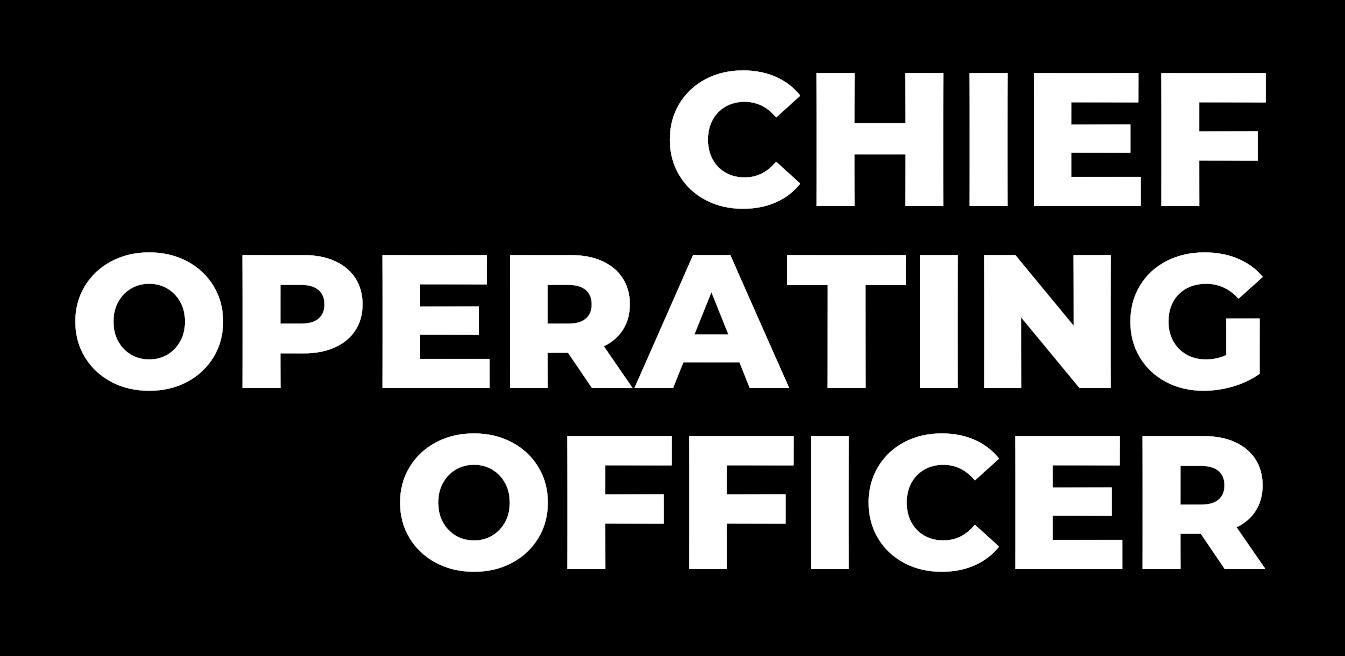
SIMEON
150 E. 1st St. Oswego, NY 13126 315-343-0440
TOWPATH TOWERS
100 Rochester St. Fulton,
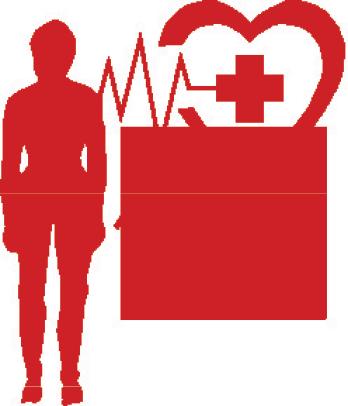
Q: What is single-port robotic surgery?
A: It’s exactly what it sounds like. Instead of using multiple little holes to stick the robotic instruments into the body to do surgery, it uses a single hole. With the capabilities of technology and engineering advancements, the instruments are smaller and so is the camera. Not only that, but the instruments that are introduced in the abdomen are no longer rigid. They have the ability to flex — articulate is the term the manufacturer uses. The basically move around similar to a flexible arm.
Q: What does that look like?
A: The best way I can describe this is, if you watch Spiderman, how Dr. Octopus uses his arms. With the old robot he would have a rigid arm that could go up and down but not have the ability to curve around corners. So with the new single-port robot the camera and the instruments can all articulate. They all go in through one small hole that is a little bit less than an inch, about two centimeters. Once they go in through that hole they can spread out. They can open up like an umbrella and then move around to where you need them to go.
Q: Aside from the reduced tissue damage, what are the advantages of use a single hole?
A: With the older robots that just about everybody else is using,

each of these instruments has to go in through a separate hole. You have to strategically place them so that they don’t run into each other, clang into each other, and cross each other. The camera is a like fiber optic snake like what a plumber might use, so it can wrap around corners and behind things.
Q: Is anything lost by using the SP robot?
A: One of the things you do lose is at the wrist of the instrument. You still have the fingers and the elbow, but the wrist portion isn’t as good. There are only so many points of mobility that you can have. That’s something that has to do with the engineering aspects of the instrument and the material of the instrument. You can’t have everything flopping around and moving. But other than that there aren’t any real limitations. Some people say it’s not as strong. It couldn’t carry a 50-pound weight or something, but it’s used for delicate surgery so that’s really not something that’s necessarily needed. If you needed to lift that weight, though, the stiffer instruments would have the advantage. What you gain [with SP] is better visualization, a smaller hole. And you don’t always have the space to place multiple holes due to things like previous surgeries and scar tissue. Or even just the size of the person or the area you’re working with.
Q: How long have you been using it?
A: Almost two years. It wasn’t until September of 2022 that I received all my training in how to use this new technique and start doing surgeries. We’ve performed well over 250 surgeries, mostly urology, which is what I do, as well as a few very delicate ENT cancer cases.
Q: For the things you can use it on, what percentage of the time would you say you’re using it versus the older robotic platforms?
A: Almost all of my urological surgeries that were using multi-port surgeries have been converted to single-port. Things like prostatectomy and simple prostatectomy, which removes the large prostate. It’s a huge advantage and change for removing the prostate. I also use it for adrenal masses, kidney cancers, kidney repairs, bladder repairs. I could do all that through a single port.
Q: When we spoke back in 2018, you held a local record for robotic surgeries. Do you still have that record?
A: I have the record of doing the most single-port surgeries in Central New York since I’m one of maybe only two in the area that’s been trained on it. But in the case of robotic surgeries more broadly, some people have surpassed me, mainly because I do cancer surgeries. My cases tend to be longer. And a lot of surgeons now use robots for simple surgeries. They can do six, seven or eight of them a day where cancer surgeries you’re doing two or three a day. A hernia surgery can be a 30-minute surgery, where a cancer surgery is usually two to three hours. So I’ve been losing ground, but am still very prolific when it comes to cancer surgeries, and I hope to soon be introducing this technology to everyone else. Right now, myself and Dr. Marzouk are the only ones using it around here. As other surgeons become more curious and the robot gets FDA-approval for other types of surgery, I think other surgeons will be quick to pick up this type of instrument which will provide advantages to our patients in the Central New York area.
Name: Po N. Lam, M.D.
Position: Urologist at Associated Medical Professionals
Hometown: Dallas, Texas
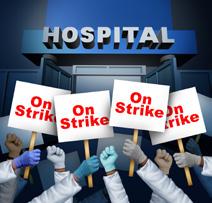




Education: Medical degree from the University of Texas Southwestern Medical Center at Dallas; completed surgical training from the University of Louisville Health Sciences Center. Went on to receive urologic training at the University at Buffalo School of Medicine and Biomedical Sciences.
Diplomate of the American Board of Urology. Has authored several peerreviewed scientific publications and presented his work at national and international meetings
Affiliations: Crouse Health, St. Joseph’s Health, Auburn Community Hospital, Oneida Hospital
Organizations: American Urological Association; Society of Endourological Surgeons; Society of Urological Robotic Surgeons
Family: Wife, son
Hobbies: Travel, running, finding new restaurants (foodie)
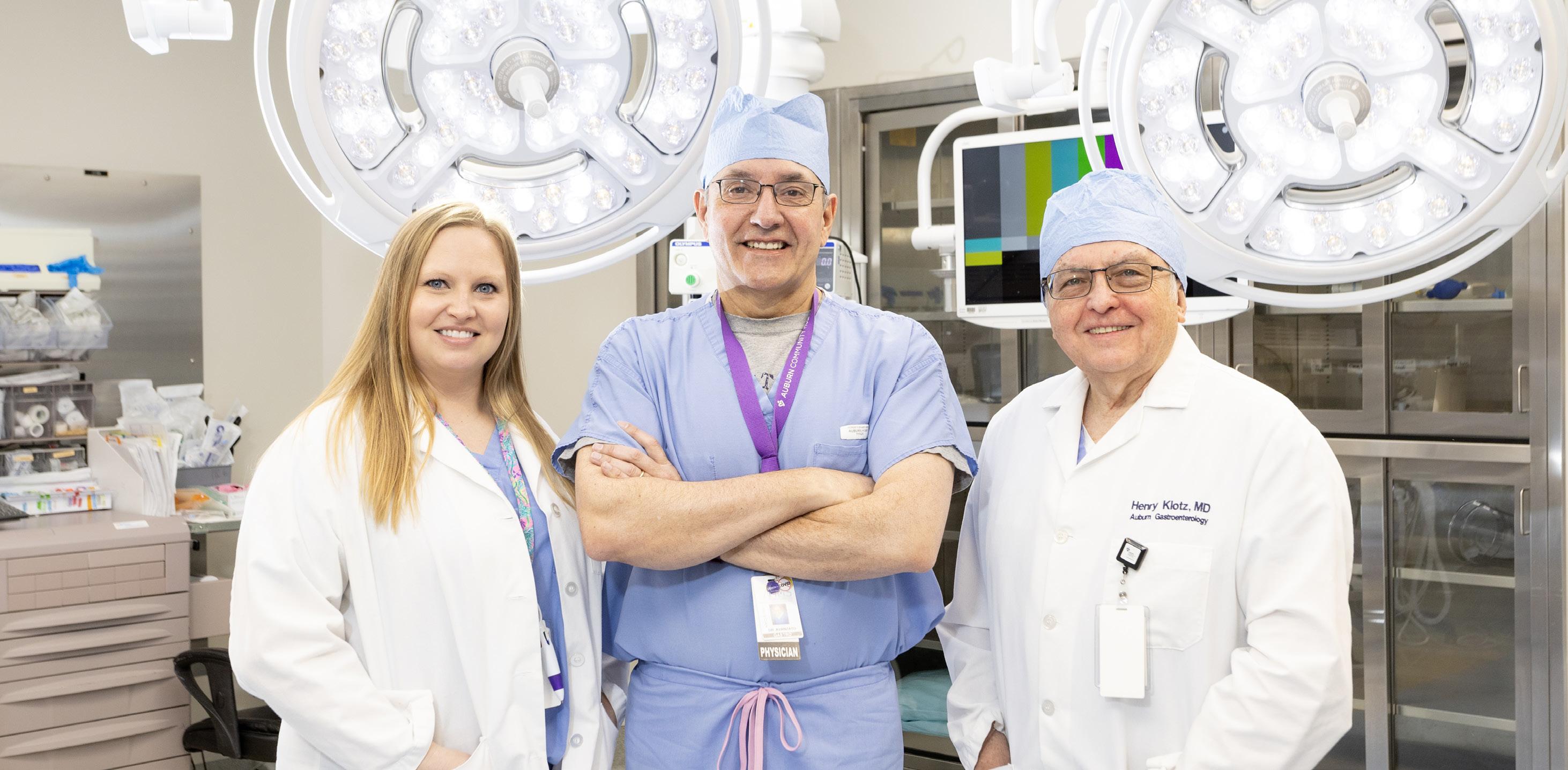
Over 97,000 people in New York state depend on skilled nursing facilities for their care. For many, it is end of life care. Ninety percent of SNFs in the state have difficulty covering basic operating costs which typically leads to staffing shortages. To make matters worse, the proposed 2024 NYS budget calls for a $500 million cut in SNF Medicaid funding. On average, 70% of SNF patients are covered by Medicaid, so the proposed cuts are financially
After years of struggling financial ly, further exacerbated by the recent pandemic, rural hospitals see light at the end of the tunnel.
About 100 rural hospitals have closed altogether since 2005 and many more probably would have closed had they not been rescued by a nearby larger healthcare system.

About 75% of rural hospital executives revealed in a recent survey that they plan to remain independent and, after years of shrinking, plan to expand services. This is great news for rural residents who depend on their local, albeit small, hospital for primary care, specialty care and emergency services. Industry experts surmise the increased financial viability of rural hospitals will actually make them all the more appealing to larger healthcare systems. Ultimately, merging into a larger regional healthcare system would be the best route to solidifying their future viability.
Prior authorizations for care have created anxiety for patients and frustration for physicians. Prior authorizations
devastating. Staffing shortages will get worse. This is a 10% cut in the daily reimbursement rate which has not kept up with inflation. Current rates (before the proposed cuts) are based on 2008 costs. Since then, costs have risen 40%. Eleven SNFs closed in 2021 and 2022. Currently, eight more are on the verge of closing this year. To add insult to injury, federal surveys (Medicare) cite SNFs for staffing shortages, consequently lowering a SNF’s overall star rating.
slow care and interfere with treatment plans. Consequently, the Federation of American Hospitals has petitioned CMS (Medicare/Medicaid) to factor in a Medicare Advantage plan’s denial rate when determining their star rating from one to five. The FAH wants CMS to monitor the percentage of a plan’s prior authorizations that are finally denied or denied than overturned. A high denial rate would reduce their star rating. The hope is to discourage insurers from abusing prior authorizations and to promote getting coverage decision right and timely the first time. MA plans have overturned initial denials 80% of the time in 2021. The Office of Inspector General reported traditional Medicare would have covered 13% of denials. The five-star rating system impacts how much Medicare pays an Advantage plan annually to care for their members. The FAH is requesting a three-day turnaround for urgent prior authorizations and seven days for standard authorizations. The AMA would like to see those times shortened further.
Ten years ago, 60% of physicians were in private practice. (If you go back decades, it was probably close to 90%.) In 2022, 47% of active physicians were in private practice. The downward trend has been accelerating. Medicare rates, typically used as a benchmark or guide by
(Star ratings range from one to five stars.) It should be noted that Medicare does pay relatively adequately but not nearly enough to offset the low Medicaid rate. In a letter to the NYS legislature, SNF executives are requesting a 16% rate increase to stay afloat which will allow them to increase staffing and prevent further closures. Some perspective helps next time a loved one or friend is in a nursing home.
commercial carriers, have remained virtually flat over the last 20 years. Operating expenses, obviously, have not. Constantly changing the hoops physicians must jump through to get paid adds to the expense and frustration facing physicians. Increasingly, younger physicians, wary of the financial difficulties, frustrations and time commitment of private practice are opting for employment with hospitals, hospital centric healthcare systems or even Walmart or CVS. As employees, they can focus on patient care and maintain a reasonable lifework balance. Hiring and retaining staff, updating equipment, reimbursement rates and balancing the books are someone else’s problem. Most expect the percent of physicians in private practice to plummet over the next 10 years as baby boomer docs are replaced by the new generation of docs. So, what does that mean for patients? Insurance companies long ago inserted themselves in the doctor-patient relationship, so where your doc works won’t make a difference. Unfortunately, many patients don’t first select their physician. They first select an insurance plan based on benefits, especially drug coverage. If your physician of choice happens to be in the plan selected, then great. Physicians will always do what’s best for their patients.
Surprises can be nice, except when it’s an unexpected medical
bill. The No Surprises Act went into effect a couple of years ago. So far, it has prevented more than 10 million surprise medical bills from out-of-network or non-participating providers. A classic scenario was you went to a participating hospital emergency room that was in your plan. Little did you know, but the ER physician group was not in your plan. Your plan covered the ER facility charge and what it would have paid a participating physician. Consequently, you received a surprise bill from the hospital or the physician group for the difference between their full charge and what your plan paid. Another surprised bill could come from a out-of-network specialist that was called in to treat you. You assumed if the hospital was in your plan, so would the physicians. Thanks to the NSA, two-thirds of insurers have since expended their networks of participating providers to include the physicians that treated you in the participating ER. No plans have decreased their networks because of the NSA. 80% of the now much fewer NSA claims are resolved without having to go through arbitration or dispute resolution.
More and more of us, especially adolescents and young adults, are experiencing anxiety, depression, anger or helplessness. Social media and 24/7 world news coverage have contributed to the crisis in mental health. According to experts, we have naturally evolved to be aware of potential threats around us for survival. Before highly invasive social media and ubiquitous 24/7 world news networks, most of our perceived threats and bad news came from and maybe an hour of local and national news. The number of perceived and real threats were relatively low and more easily managed. We can only handle so much bad news. Doomsday scrolling refers to the habit (addiction?) of virtually seeking threats or bad news via social media or 24/7 cable news. We are now bombarded with bad news: wars, natural disasters, food insecurity, drug addiction, inept politicians and injustice. Few of us can handle this overload without getting depressed, anxious or angry. Mental health experts are urging us to put our phones down and limit cable TV news viewing. In other words, limit our doomsday scrolling. People who have done so have reported they are much happier, less anxious and have time for more pleasant activities.
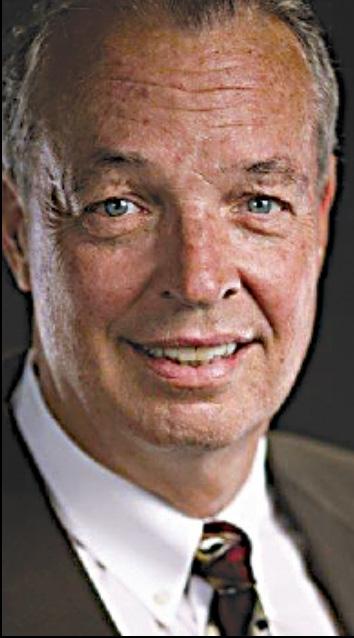
George W. Chapman is a healthcare business consultant who works exclusively with physicians, hospitals and healthcare organizations. He operates GW Chapman Consulting based in Syracuse. Email him at gwc@gwchapmanconsulting.com.

Americans pay nearly three times as much for their prescription drugs as residents of other nations do, new research shows.
Drug prices in the United States average nearly 2.8 times those seen in 33 other countries, the report from RAND Health Care found.
Brand-name drugs are even more expensive, with U.S. prices averaging 4.2 times those in comparable nations, the researchers added.
On the other hand, Americans receive a real bargain when it comes to unbranded generic drugs. Those run about two-thirds (67%) the average price found in comparable countries.
“These findings provide further evidence that manufacturers' gross prices for prescription drugs are higher in the U.S. than in comparison countries,” said lead researcher Andrew Mulcahy, a senior health economist at RAND.
“We find that the gap is widening for name-brand drugs, while U.S. prices for generic drugs are now proportionally lower than our earlier analysis found,” Mulcahy added in a RAND news release.
Generics account for 90% of prescription drugs sold in the United States, the researchers noted.
For the report, researchers com-
pared U.S. drug prices to those of 33 other countries in the Organization for Economic Co-operation and Development (OECD).
Across all of the OECD nations studied, total drug spending was $989 billion in 2022, results show.
The United States accounted for 62% of the money paid to drug companies, but only 24% of the total drugs sold.
U.S. drug prices ranged from 1.7 times prices found in Mexico to more than 10 times prices in Turkey.
The analysis relied on manufacturer's gross prices for drugs because net prices — what is actually charged after negotiated rebates and discounts — are not systematically available.
However, estimates that attempted to account for those discounts found that U.S. prices for brandname drugs are still more than three times higher than those in other countries.
Retail prescription drug spending in the United States increased by 91% between 2000 and 2020, and spending is expected to increase 5% a year through 2030, researchers said. Prescription drugs now account for more than 10% of all health care spending in the United States.


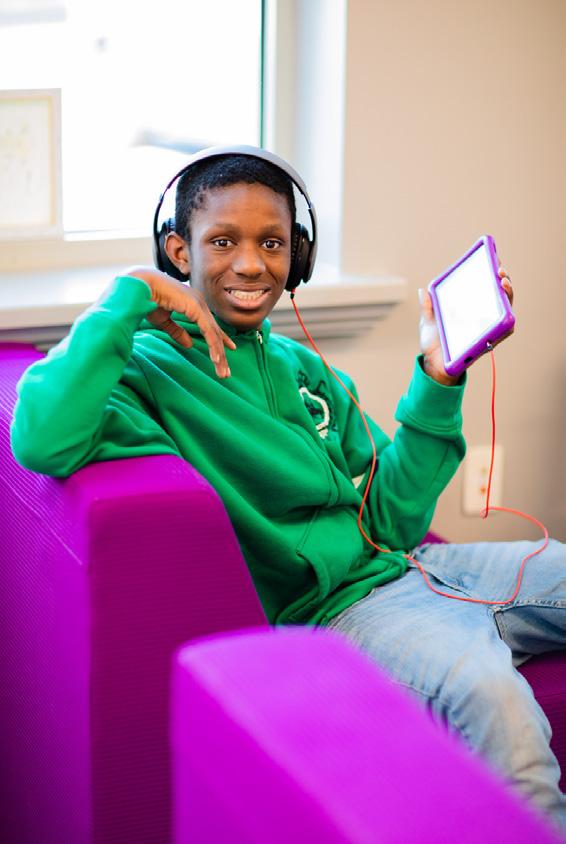
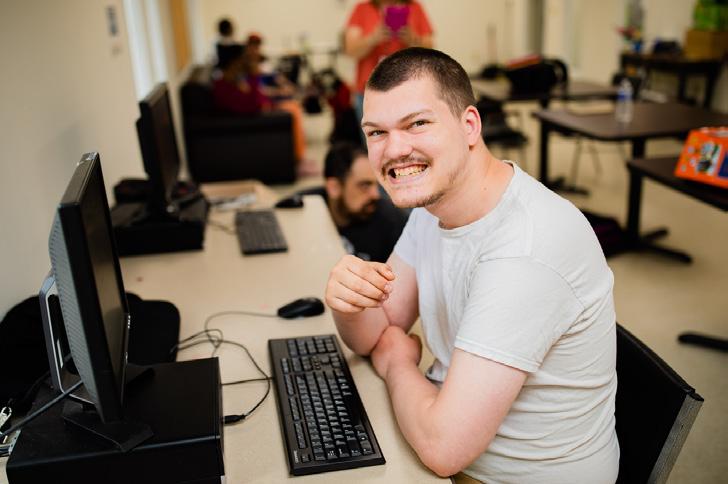
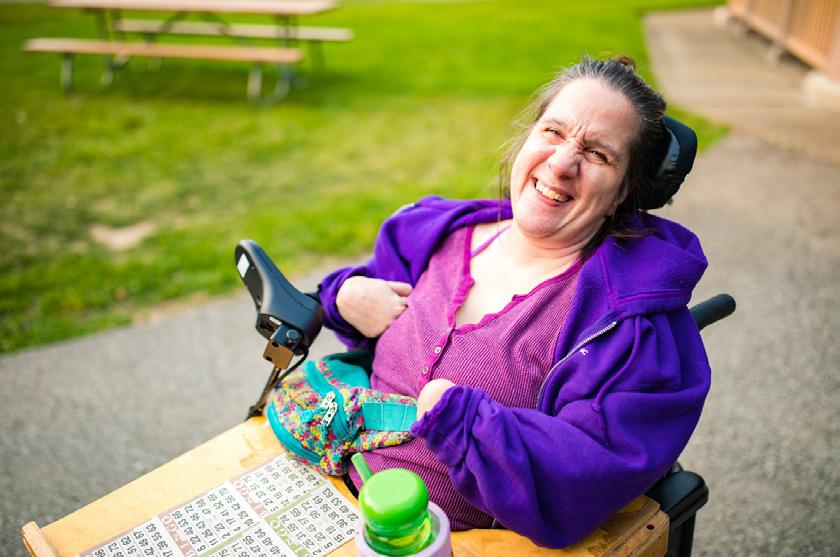
In William Shakespeare’s “Julius Caesar,” a fortune teller warns Caesar to “beware the ides of March.” That immortal phrase portends gloom and doom, and has given this month a bad rap.
Sure, March can be cold, gray and damp. But it doesn’t need rain on your parade.
If the month of March is stretching out in front of you as a dreary void to fill, you are not alone. For many, our winter wonderland is not so wonderful during this unpredictable time of year.
That's when anxiety can make an unwelcome visit. You might feel yourself spiraling down, questioning the past, and second-guessing your decisions. And that’s when you could be tempted to grab the TV remote and head to the couch.
I can remember many nights after my divorce, coming home after work to an empty apartment with hours on my hands and a heavy heart. The prospect of a long, lonely evening ahead was almost unbearable.
After too many nights watching mind-numbing reruns, I had finally had enough and started making better use of my “me time.” I am now much more comfortable spending time by myself and have come to enjoy my own company.
In fact, it’s not unusual for me to pass on an invitation out, in favor of spending a nice quiet evening at home — relaxing or fully engaged in something I love to do.
If you are challenged by time alone this time of year, consider the suggestions below. You might even clip this column and post it on your refrigerator as a handy reminder.
Read
When’s the last time you read a good book?
In our busy lives and with so many electronic options vying for our attention, reading can fall by the wayside. It’s such a shame. Reading for enjoyment and enlightenment can turn a lonely evening into a lovely one.
Don’t know where to start? Ask a friend for a suggestion or select a “New York Times” bestseller. Snuggle up in a comfy place, and let a good book introduce you to new people, new places and new ideas. We rarely feel alone when reading.
If you haven’t read “Lessons in Chemistry” by Bonnie Garmus, I highly recommend it.
Write
Marcel Proust wrote, “We are healed of a suffering only by expressing it to the full.” I’ve found that to be so true.
Writing has been, and always will be, a helpful tool on my journey to create a fulfilling life on my own. Chronicling my emotional ups and downs, the steps I’ve taken to improve my life, and the progress I’ve made has helped to strengthen my resolve and self-confidence.
If you’ve never kept a journal, why not give it a try this month?
Make it a practice to make a journal entry at least daily. For me, the best times are first thing in the morning and last thing at night. Keep it short and simple to start.
Write about your day, your feelings and fears, your observations, your successes and setbacks, and — most importantly — your aspirations for the future.
You may discover, as I have, how
powerful and therapeutic the act of capturing your thoughts in writing can be. Numerous studies have found that journaling can increase emotional well-being, reduce stress, and even result in a better night’s sleep.
As you work through some of the issues associated with living alone, and you become more content, you may find that reading and rereading your journal entries can be a great way to see how much progress you are making.
I guarantee you’ll find it fascinating reading a year from now!
I know this might sound uninspiring, but clearing out the clutter can be very satisfying and a great way to spend a few hours alone.
Recently, I spent an evening sorting out my closet and filling two bags for a local refugee resettlement program. It was very satisfying. I not only lightened my load, I did something for a good cause.
As a result, I felt part of something bigger than myself and less alone.
This can be daunting, especially if you’ve yet to identify a passion, but hang in there.
Many women and men in long-term relationships often lose sight of their own interests in favor of attending to the needs of others. The pursuit of your own passions or personal pursuits can be lost in the process.
Now is a good time to rediscover your “loves” and to dedicate your time alone to those pursuits. Do some digging and identify the things you loved as a child or young adult, then make a conscious decision to revisit those things now.
I did some digging years ago and discovered that digging, in fact, was a passion of mine: digging in the garden, that is! I now enjoy bountiful flower and vegetable gardens, and use the month of March to plan what I want to grow and prepare for the planting season.
When you’re engaged in an activity you’re passionate about, you
born preterm,” concluded the team led by senior researcher, physician Jenny Bolk, a consultant neonatologist with the Karolinska Institute in Stockholm.
“The findings may help professionals and families to better assess risk, follow-up and healthcare systems planning for children born moderately or late preterm,” they added.
may experience a state of “flow,” where you are fully immersed in the task at hand and lose track of time. I know that happens to me. And it can happen to you, too.
Start digging and uncover your passion this month!
With time on your hands, you are in a great position to reach out and make connections with others, including long-lost friends. This can be a very meaningful way to spend an evening.
Just yesterday, I received an email from a former colleague. I was very touched, and accepted her kind invitation to get together.
So, I encourage you to reach out to someone you haven’t seen in a while. Extend an invitation to get together and, chances are you'll be rewarded with a warm reunion.
That’s right, veg out. Grab the TV remote, a pint of ice cream, and head for the couch. Do it without guilt, give yourself a break, and remember you’re only human.
Everyone is entitled to an occasional night when they just hang out, do nothing, and eat junk food. Indulge yourself and tell yourself you deserve it.
Wake up the next morning free of remorse and ready to take on the day: alone at home and “at home” with yourself, even in the Ides of March.
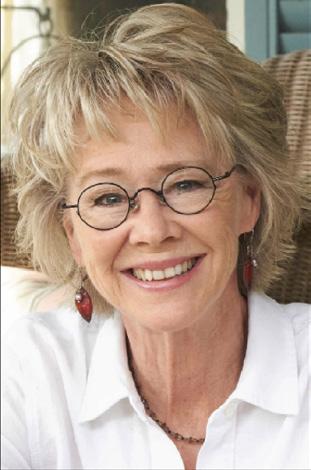
Gwenn Voelckers is the author of “Alone and Content: Inspiring, empowering essays to help divorced and widowed women feel whole and complete on their own.” She welcomes your thoughts on this column as well as topic suggestion for future essays at gvoelckers@rochester. rr.com.
During an average follow-up period of 13 years, more than 75,000 children had at least one diagnosis of developmental impairment.
Babies born moderately or late preterm showed higher risks for any developmental impairment than those born at full-term, results showed.
Babies born even slightly early have a higher long-term risk of developmental difficulties that could affect their behavior and learning ability, a new study finds.
Infants born moderately (32-33 weeks) or late preterm (34-36 weeks) are more likely to have epilepsy or problems with brain function, motor
skills, vision or hearing, according to analysis of data from more than 1 million Swedish children.
About 80% of preterm births fall into these categories, researchers noted.
“The risks should not be underestimated as these children comprise the largest proportion of children
Previous studies have shown that babies born early have higher risks of developmental and behavioral disabilities through childhood and adolescence, researchers said.
However, few studies have investigated long-term outcomes of these children, compared with children born at full term.
For this study, researchers analyzed Swedish health data to compare children born at full term (39-40 weeks) compared to moderate- or late-preterm births.
The data included nearly 1.3 million babies born without birth defects in Sweden between 1988 and 2012.
That included a nearly five-fold increased risk of motor impairment and a nearly two-fold increased risk of epilepsy for children born moderately preterm, the study found.
The results were published Jan. 24 in the BMJ journal.
Researchers noted in a journal news release that since this was an observational study, they can't establish a direct cause-and-effect relationship between preterm birth and developmental problems.
For example, they can't rule out the possibility that factors like alcohol or substance use during pregnancy caused some of the developmental difficulties.

Don’t wait to get the care you need. When you visit the St. Joseph’s Health Cardiovascular Institute, you can expect the best. They’re rated high-performing in more heart procedures than all other area hospitals.*
You’ll be back home and feeling better in no time.
*U.S. News & World Report ©

OF CARE | sjhsyr.org/cvi
On the journey to wellness, harm reduction keeps people saferBy Deborah Jeanne Sergeant
“Harm reduction” as part of a strategy for treating people with substance use disorders sometimes receives a bum rap as contributing to illicit drug use instead of helping people.
Handing out needles to people injecting drugs seems on the surface as promoting drug use. However, in recent years, harm reduction has become a more widespread tool among agencies treating substance use as dangerous additives like fentanyl and xylazine and more have been found in greater amounts in the illicit drug supply.
The New York Office of Addiction Services and Supports notes on its website that harm reduction through drug test kits is an imperative as these harmful additives have been linked with the rise of overdose deaths from drugs like cocaine, heroin, MDMA/ecstasy and with pills. Since users cannot see, smell or taste fentanyl and xylazine in drugs, they often take tainted drugs unwittingly.
Distributing free test kits helps reduce these tragic outcomes. Partnering with the MATTERS Network, OASAS has distributed more than 100,000 orders for free drug test kits.
Other harm reduction strategies OASAS promotes include increased naloxone access and training; syringe services programs; overdose prevention education; recovery support
efforts and prevention coalitions. The organization further encourages risk reduction strategies such as avoiding using alone (the Never Use Alone Hotline, 800-484-3731 offers live operators to stand by), creating an overdose plan, carrying naloxone to block the effect of opioids and reverse an overdose texting the Help & Hope Program, “JOIN” to 55753 to receive supportive messages and connect with a specialist.
Ready2RecoverCNY in Manlius supports harm reduction as a strategy and hosts Narcan training.
“We’re a big proponent of people knowing how to use it, how to get it and why it’s important,” said Ed Gabriel, co-executive director of the organization. “There’s no simple answer or magic bullet to fully address the opioid epidemic, the fentanyl problem and all the other issues connected with addiction. We feel everyone has to be open to any and all good ideas to help prevent if possible but certainly assist and treat people with substance use disorder and get them on the path to recovery.”
Ready2RecoverCNY was formerly known as Road2RecoveryCNY. The organization also hosts Sober Syracuse, a website of resources to help people in recovery, including alcohol-free activities.
Municipal organizations also tend to support harm reduction.

When the Supreme Court opened the doors to mobile sports betting (MSB) in 2018, it laid the path for states to follow. As of 2024, it has been legalized in 38 states. New York state legalized sports gambling in 2013 and went on to legalize mobile sports betting in 2022, expanding the number of bets and gamblers exponentially. The state
focused on the projected revenue that mobile sports betting would bring in, rather than the exponential increase in the numbers of individuals, families and communities impacted by this decision and the devastation of this addiction.
While problem gambling affects individuals of all ages, the greatest increase, according to a recent Siena
“We are really supportive of harm reduction initiatives,” said Mariah Senecal-Reilly, who works for the Onondaga County Health Department as program coordinator II and oversees substance use initiatives. “We believe that keeping people alive is the most important thing because if they overdose or have another drug-related complication, they won’t have the opportunity to pursue meaningful change in their lives. We support them in ways to keep them alive while they seek to make change.”
The organization offers Naloxone and Narcan training, including online training. The Health Department also provides materials through the mail or by dropping them off upon request. Pick-up Naloxone boxes are also available throughout the city, with sites listed on the Department’s website.
“People can access it there in a low threshold manner in case they have barriers in acquiring from a pharmacy,” Senecal-Reilly said. “We also give out and encourage people to use fentanyl and xylazine testing strips. We’ve given out thousands. They help people stay safe. It’s common that people don’t know what is in substances they’re using. We’re seeing counterfeit pills. People think they’re getting Adderall but it doesn’t contain that. It could contain fentanyl.”
She said that additives commonly cause overdoses among people who use drugs because they are not prepared for an overdose incident.
In addition to drug safety testing and clean needle distribution and collection, the Health Department encourages people who use drugs to never do so alone. All of these measures can help people stay safer and are part of the mobile harm reduction unit.
College poll, was found in men aged 25 to 34. Of the young men who are placing bets online, half of the poll participants acknowledged that they are betting far over their limits. This affects teens and younger adults as well those who are betting on more than a favorite sport. Instead, they are seeking the action of placing bets on various plays, much more than the game itself. Betting on separate plays within a game is known as microbetting, which has increased in frequency with MSB.
Mobile sports betting utilizes artificial intelligence (AI), which is capable of drilling down to the individual gamblers' preferences to determine their betting data points. The industry looks at what offers are more attractive, what the push points are, the inducements that both attract and retain the gambler, and how to ensure a gambler will continue to gamble for longer periods with increasing wagers. Essentially, AI learns when an individual is most vulnerable.
It is important to remember we are dealing with an addiction that can devastate not only the individual gambler but also their families, their communities, and their places of work.
The industry blames the gambler just as the tobacco companies several
The health department’s distribution of personal care supplies and clothing helps encourage people who use substances to take better care of themselves and consider pursuing recovery.
“We have a peer recovery advocates team that is available to be with someone who is going through recovery or trying to make positive changes in their life,” Senecal-Reilly said. “They also come out with the harm reduction unit. We link people to them regularly. The peer team is helpful in that because of their lived experience, they can knowledgably advise people as to how to access resources.
“We want people to be safer. We’re there to support them at whatever change they’re able to make. We’re really happy when people come to their own realization that they can have some autonomy and control over their life and implement strategies to improve their situation. It’s about empowerment and helping people to get into those stages of change. When people are armed with harm reduction strategies, they are more likely to engage in treatment than those who are not. It breaks things down into smaller chunk.”
Some detractors believe that harm reduction enables people to use illicit drugs. However, the health department’s measures are not intended for people who don’t use illicit drugs.
“There are so many systemic barriers that prevent people from seeking care,” Senecal-Reilly said. “Trauma is the initiator of a lot people’s use. That kind of recovery is a long-term process. We want people to get to a stable place and realize the underlying causes of their use. This is a tool while they pursue this kind of path.”
decades ago blamed the smoker for refusing to acknowledge the addictive nature of their product.
We are again dealing with an addictive product with few, if any, guardrails when it comes to MSB. A recent 60 Minutes interview described it as a ‘Wild West’ due to lack of controls in place.
Problem gambling help is available!
For more information and to access referral resources, visit the National Council on Alcoholism and Drug Dependence – Rochester Area’s website at www.ncadd-ra.org/ services/finger-lakes-addiction-resource-center/ and view the “Problem Gambling Services Directory” (https://ncadd-ra.org/wp-content/ uploads/2023/12/Problem-Gambling-for-9-Counties-Dec-2023.pdf).
Other resources are available through the Finger Lakes Problem Gambling Resource Center at https://nyproblemgamblinghelp. org/stop-gambling-near-me/.

Recovery from substance abuse relies upon the right support.
That’s what Ed Gabriel strives to offer at Ready2RecoverCNY where he serves as co-executive director.
The 100% volunteer-run organization helps people with substance use disorder pay for long-term, in-patient treatment and learn about “sober” activities and events to help them live a full life in sobriety.
“We fill a niche in the recovery efforts for CNY adults who are in need of assistance,” Gabriel said.
He explained that the problem is the time limits of insurance coverage for recovery. Most insurance plans cover only up to four weeks for in-patient treatment. Ready2RecoverCNY, formerly Road2RecoveryCNY (with the ‘y’ after recover), helps fund 90 days of in-patient treatment and 90 days of sober living at a facility in Austin, Texas.
Why Texas?
“It’s an area that has a strong
support system,” Gabriel explained. “The number of facilities in New York state that are long-term is very limited and tremendously expensive. In addition to the robust recovery community in Austin, the distance is helpful. For any person in addiction, its person, places and things contribute to addiction. Removing them from that environment and the things that trigger addiction are helpful for recovery.”
The 501(c)(3) organization does recommend New York resources when applicable.
Two years ago, Ready2Recover started a sister website, Sober Syracuse — www.sobersyracuse.org — as a resource for people in recovery to find local resources and suggested reading.
“Our goal is to address the question for people in recovery, ‘What do I do with my free time now?’” Gabriel said. “We have suggestions for sober activities that might be of interest that they haven’t thought


Ed Gabriel is the co-executive director at Ready2RecoverCNY. “Our goal is to address the question for people in recovery, ‘What do I do with my free time now?’” he says.
about before, like the zoo or local music venues.”
He had hoped to populate the site with “sober” events in the area. However, the CNY region has fewer events than he had anticipated. Gabriel hopes that more organizations will host sober nights where no alcohol will be served at places where it is typically offered, such as a ballpark.
“At this point, the amount of information we can put on the site is limited by what’s available,” he added.
Last year, Ready2Recover started an initiative, Resources and Connections, which will offer a monthly meeting open to the public starting in April this year. Anyone who has a friend or loved one in recovery or is involved in this type of work — such

as law enforcement or therapist — are welcome to attend.
“When someone’s in recovery, one of the challenges they face as they begin the recovery journey is what do I do to spend my free time, to engage with other people, to recreate that I can do without drinking or using,” Gabriel said. “Sometimes, the answer to that isn’t as easy for someone in recovery as someone who hasn’t had to face that challenge.
“There’s ample opportunity for entrepreneurial initiatives whereas some venue could sponsor a sober night, charge admission and refreshments and still serve a purpose.”
About 24 volunteers operate the organization.
For more information, visit www. road2recoverycny.com.



Mental Health Services
Substance Use Disorder Services
Housing Services Our

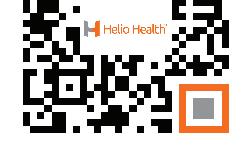
Young people (24 years and younger) spend an average of six hours a day online, primarily using their smartphones, according to research from the University of Surrey. Older people (those 24 years and older) spend 4.6 hours online.
Surrey's study, which involved 796 participants, introduces a new internet addiction spectrum, categorizing internet users into five groups:
•Casual Users (14.86%): This group mainly goes online for specific tasks and logs off without lingering. They show no signs of addiction and are generally older, with an average age of 33.4 years. They are the least interested in exploring new apps.
• Initial Users (22.86%): These individuals often find themselves online longer than they initially planned and are somewhat neglectful of household chores but don't consider themselves addicted. They are moderately interested in apps and have an average age of 26.1 years.
• Experimenters (21.98%): This group feels uneasy or anxious when not connected to the internet. Once
they go online, they feel better. Experimenters are more willing to try out new apps and technology, and their average age is between 22.8 and 24.3 years.
• Addicts-in-Denial (17.96%): These users display addictive behaviours like forming new relationships online and neglecting real-world responsibilities to be online. However, they won't admit to feeling uneasy when they're not connected. They are also quite confident in using mobile technology.
• Addicts (22.36%): This group openly acknowledges their internet addiction and recognizes its negative impact on their lives. They are the most confident in using new apps and technology. Their time online is significantly greater than that of the casual users.
Physician Brigitte Stangl, the lead author of the study at the University of Surrey, said:
"Our main aim was to clarify the difference between using the internet in a problematic way and being addicted to it. We found that the
Gesundheit! Or God bless you! Those are two common responses when someone sneezes.
Allergy season is coming as trees begin releasing pollen in March here in Central New York. So, we will be likely to hear a lot of those phrases.
Sneezing is a process where the body attempts to expel irritants from the nasal cavity. Triggers include allergens, for example pollen and animal dander.
Infections such as viral upper respiratory infections can provoke sneezing. It’s an efficient way for viruses to make their way from a sick person into the airways of their contacts, spreading the illness.
Some people sneeze in response to bright light. This is called the photic sneeze reflex and manifests as uncontrollable sneezing with sudden exposure to sunlight. Usually it’s a mild reaction, although it is potentially dangerous for drivers and pilots. There seems to be a genetic component because it often runs in families. Some people sneeze in response to a full stomach, also an inherited phenomenon. It’s called snatiation — a new word that I learned
while researching this article.
During a sneeze, the palate and uvula (that thing hanging down in the back of the throat) move in a way as that accelerates the air leaving the lungs and forces it out through the nose. Particles in the sneeze can travel several feet at speeds up to 100 mph. For this reason, there are a few maneuvers to help reduce the spread of infectious materials. Ideally look downward when you sneeze. Cover your mouth by sneezing into your elbow, a tissue or a handkerchief. Covering your mouth with your hand can block the sneeze but it coats your hand with germs. And sneezing into your fist is pretty much useless, it merely splits the flow.
It’s a myth that you can’t sneeze with your eyes open. It’s also a myth that your heart stops when you sneeze.
There’s not much that will stop a sneeze in its tracks once it’s started. Holding your nose is not recommended. That magnifies the pressure potentially harming your nose and lungs and it doesn’t stop the sneeze. Avoiding allergic triggers and treating allergies can help prevent sneezing.

younger you are, the more likely you are to be addicted to the internet, and this tendency decreases with age.
"We also wanted to explore how the severity of internet addiction affects users' experience with new, high-tech applications like augmented reality."
The researchers found no link between gender and online behaviour.
Additionally, higher levels of addiction correlated with more confidence in using mobile technology, particularly a greater willingness to try out new apps.
The study also discovered that emotional experiences (the emotions felt while using an app) strongly
predicted future behaviour for all groups when interacting with augmented reality.
In contrast, action experiences (navigating a website or playing a game) were mostly irrelevant for addicts.
Stangl concluded:
"Our study underscores the need for tailored interventions and support for individuals at various stages of internet addiction. The findings will certainly influence the design and development of digital services and AR applications, ensuring they cater to the diverse needs of users in the current digital environment."
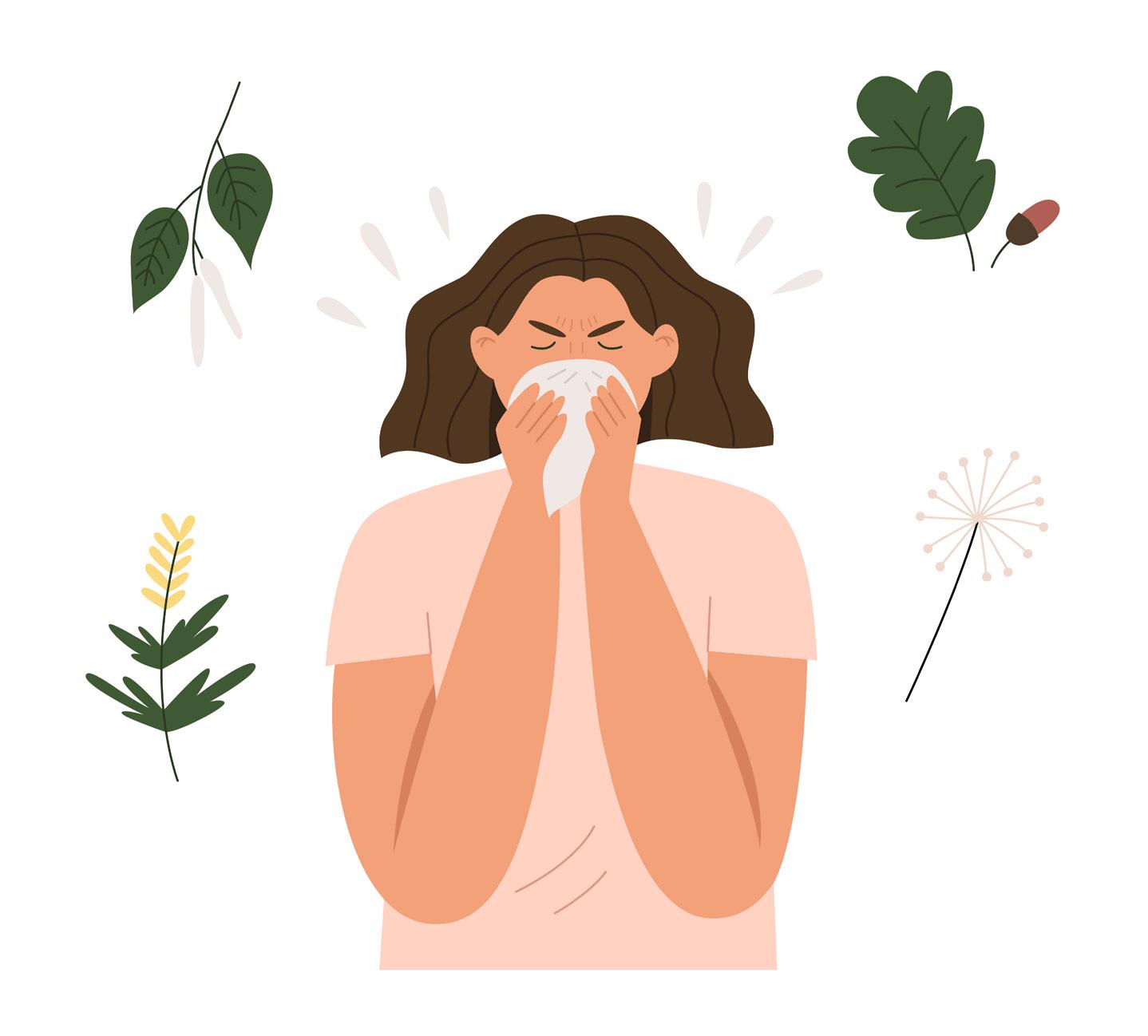
How did the tradition of saying “Bless you” after a sneeze begin? No one knows for sure as it dates back to the Middle Ages. There are several hypotheses.
Perhaps it started with the pandemics of the 14th century, with the hope that this would prevent the sneezer from contracting a lethal disease. Or maybe it stems from the Renaissance belief that that the heart stopped during a sneeze. A third idea is that it expresses hope that it will prevent the sneezer from catching the cold, flu or similar illness. The word gesundheit — which was our family’s tradition — comes from the German word meaning health. It also expresses the hope that the phrase
will ward off sickness.
Sneezing isn’t confined to humans. Not only do mammals like cats, dogs and horses sneeze — but even reptiles like iguanas sneeze!
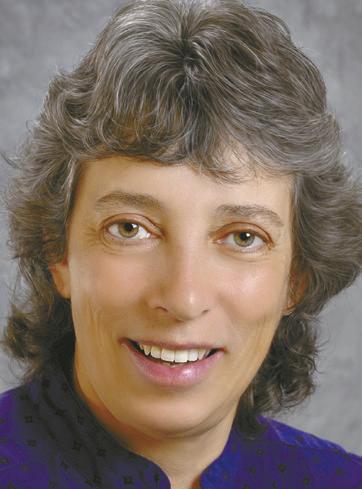
Eva Briggs is a retired medical doctor who practiced in Central New York for several decades. She lives in Marcellus.
ELEMENTAL MANAGEMENT GROUP
ELEMENTAL MANAGEMENT GROUP
Hybrid Nurse Aide Training Program
Hybrid Nurse Aide Training Program
ELEMENTAL MANAGEMENT GROUP
Hybrid Nurse Aide Training Program
Hybrid Nurse Aide Training Program
ELEMENTAL MANAGEMENT GROUP
ELEMENTAL MANAGEMENT ROUP
ELEMENTAL MANAGEMENT GROUP






ELEMENTAL MANAGEMENT GROUP



Equip your facility with our unstoppable HYBRID CNA program, empower your team to deliver top-notch care with the strength of a champion.
Equip your facility with our unstoppable HYBRID CNA program, empower your team to deliver top-notch care with the strength of a champion.
Equip your facility with our unstoppable HYBRID CNA program, empower your team to deliver top-notch care with the strength of a champion.
Are you looking for an innovative way to attract CNA students? We have your answer
Equip your facility with our unstoppable HYBRID CNA program, empower your team to deliver top-notch care with the strength of a champion.
Are you looking for an innovative way to attract CNA students? We have your answer
Are you looking for an innovative way to attract CNA students? We have your answer
Are you looking to minimize and most importantly eliminate agency use? We have your solution
Are you looking to minimize and most importantly eliminate agency use? We have your solution
Are you looking for an innovative way to attract CNA students? We have your answer
Are you looking to minimize and most importantly eliminate agency use? We have your solution
Are you looking to improve morale by increasing your direct care PPD?
Are you looking to improve morale by increasing your direct care PPD?
Reach out to us to hear more
Reach out to us to hear more
Are you looking to improve morale by increasing your direct care PPD?
Are you looking to minimize and most importantly eliminate agency use? We have your solution
Reach out to us to hear more
Are you looking to improve morale by increasing your direct care PPD?
Are you looking to captivate and motivate the newer generation by offering unique and rewarding training opportunities?
Are you looking to captivate and motivate the newer generation by offering unique and rewarding training opportunities?
Reach out to us to hear more
Look no further contact us today
Look no further contact us today
Are you looking to captivate and motivate the newer generation by offering unique and rewarding training opportunities?
Look no further contact us today
Are you looking to captivate and motivate the newer generation by offering unique and rewarding training opportunities?
CONTACT:
CONTACT:
Look no further contact us today

Peg Reith BSN, RN
Peg Reith BSN, RN
Phone: 315-529-3267
CONTACT:
Phone: 315-529-3267
Email: CNA_Training@elementalmgt.com
Email: CNA_Training@elementalmgt.com
Peg Reith BSN, RN
CONTACT:
Phone: 315-529-3267
Peg Reith BSN, RN
Email: CNA_Training@elementalmgt.com
Phone: 315-529-3267
Email: CNA_Training@elementalmgt.com








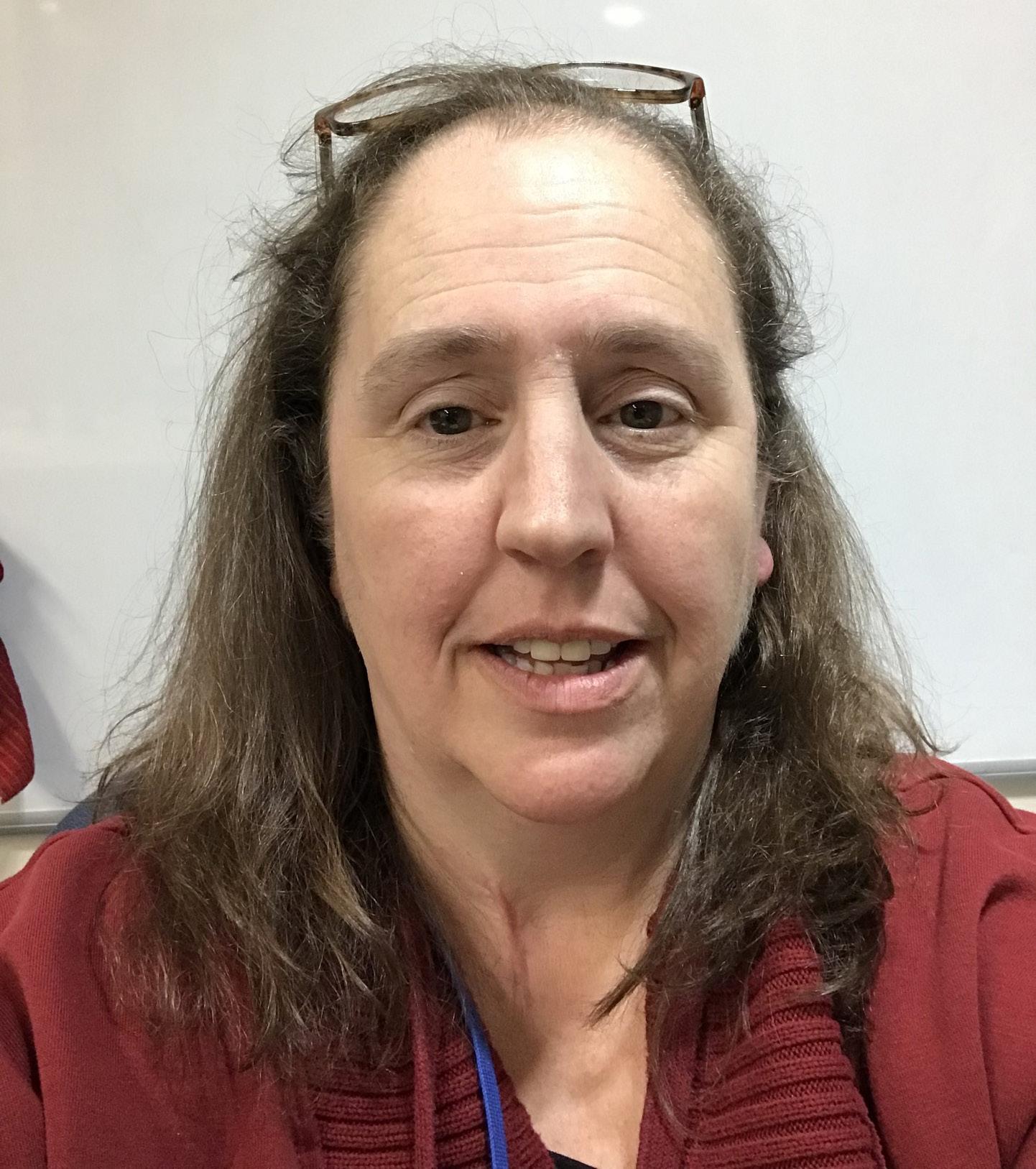
Q: Your agency offers a wide range of programming and assistance. Can you give our readers an overview of the services you provide, especially those through your Community and Family Resource Center?
A: The Community and Family
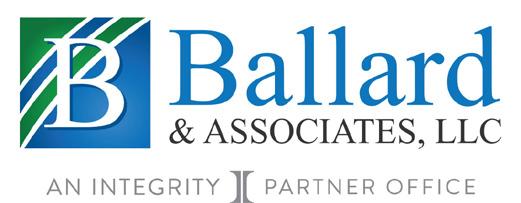
Resource center encompasses our community services, which involves case management and a bilingual case manager, our food pantry and our youth drop-in program for kids in the summertime and afterschool. That program is open to families on
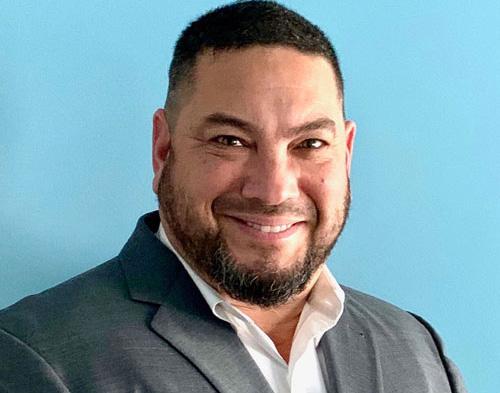
Tuesdays and Thursdays. We call it Family Fun Nights. We also run parenting classes using the Circle the Security curriculum. It’s helping a parent see their own self, their own trauma, how they were raised and how that impacts their children.
We have care management for adults that have a mental health diagnosis, care management for children that have like a mental health or severe health diagnosis; our parent education program for parents that are maybe at risk of losing custody and need some help and education. We have a program for parents and for families where either an adult or the child has some kind of mental health diagnosis, and we work with the family unit — how to keep them all together and work on their family bonding. And we have transportation programs as well.
Q: What is your agency’s budget?
A: $5,541,924.
Q: How many employees does your agency have?
A: Currently 59, but we have some vacancies.
Q: How many people do you serve?
A: According to our report to Catholic Charities USA for 2022 we served approximately 982 people. We believe these are unduplicated. We have not done 2023 yet.
Q: What is the age range for the youth drop-in program?
A: Second grade through 12th grade.
Q: Are there fees associated with these programs?
A: None of those programs have any kind of fees or any kind of requirements except for that they are an Oswego County resident.
Q: Do you partner with other agencies to provide these services?
A: We do a lot of collaborations. A specific program — we have Family Time, a visitation program for parents who do not have custody of
their children so that they have a safe place to come and visit their children and work on their own parenting skills. That program is a collaboration between us, Farnham Family Services and Huntington Family Services.
Q: Can people seek you out directly or do they have to be referred?
A: The programs are all really different. Our suggestion always is to just call us and we’ll guide you.
Q: Are you seeing an increase in the need for your services and if so, what do you think might be prompting that?
A: We are seeing a huge increase because we have a huge homeless population in the county. That’s increasing our pantry and the need for assistance. There are wait lists for a lot of our programs right now. Some of it has to do with staffing, and then on top of it, the cost of living.
Q: You’re based in Fulton, but Oswego County is such a large geographical area with a very diverse population. Do you have satellite offices in other parts of the county?
A: We do not. The staff travels. Through our food pantry, we provide homeless food bags. If someone’s homeless, they’re put up at a hotel temporarily. We pack the food bags particularly around what they may have access to. We also have food bags that are meant for people that are unfortunately living in tents or on the street somewhere.
Q: What is the best way for people to access your services?
A: Calling is the easiest and then we can help direct you in the right direction.
Catholic Charities of Oswego County is at 808 Broadway, Fulton. The phone number is (315) 598-3980. The website is ccoswego.com. The food pantry is open 10 a.m. to 2 p.m. weekdays and from 4 to 6 p.m. on Tuesdays and Thursdays.
Pity the poor peanut.
Despite being America’s most popular nut, peanuts rarely get the nutritional shout-out its trendier cousins get. Perhaps it’s their association with ballparks that clouds our perception. Or circuses, state fairs and bars. Whatever the reason, it’s time to unpack the impressive nutrition found in every peanut.

sure normal and the heart rhythm steady.
Let’s begin with a peanut’s most salient nutrient: protein.
Did you know that peanuts have more plant protein than any other nut? One handful (about ¼ cup) has 10 complete grams, meaning it has all eight amino acids in sufficient amounts. While protein is certainly important for growth, tissue repair and recovery from exercise, it is equally important for something else: weight control. Studies show that because protein improves function of weight-regulating hormones, it reduces hunger, helping you eat fewer calories.
Peanuts, like most nuts, are exceptionally good for hearts. For starters, their mix of soluble and insoluble fiber helps prevent heart disease by lowering bad cholesterol levels. A peanut’s healthy fats do the same, while also reducing plaque build-up in arteries and decreasing triglycerides (unhealthy fats) in blood. What’s more, peanuts are a good source of magnesium, a crucial mineral that helps keep blood pres-
Another reason to reach for America’s favorite nut? When it comes to managing or thwarting Type 2 diabetes, peanuts are like a secret weapon: they taste great but don’t cause blood sugar to spike; they’re filling and so help with weight management (excess weight is No. 1 cause of this quiet epidemic); their plant proteins have been proven to reduce the risk of getting diabetes; and, they’re endorsed by the American Diabetes Association.
Although low in carbs, peanuts are high in calories—a handful (¼ cup) has about 200. But because they’re so satisfying, a modest amount may sate your hunger.
Coincidentally, March is National Peanut Month. Woo-hoo! Another reason to go nuts for nuts!
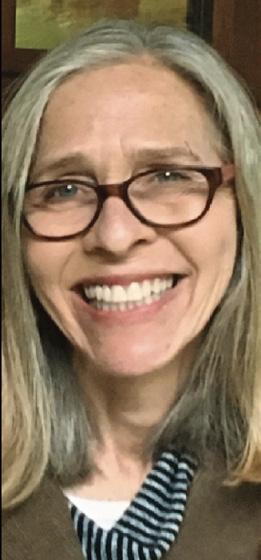
Anne Palumbo is a lifestyle columnist, food guru, and seasoned cook, who has perfected the art of preparing nutritious, calorie-conscious dishes. She is hungry for your questions and comments about SmartBites, so be in touch with Anne at avpalumbo@aol.com.
Astudy published a year ago by Manchester Metropolitan University revealed that women dealing with endometriosis, a chronic pain condition in the uterus, often feel that their medical care providers dismiss their pain and that they do not receive referrals for specialists.
These struggles have led many women to seek alternative health as a means to deal with their pain.
Women also have chronic pain issues unique to their gender. A common area for women’s chronic pain is the pelvis. Physician Monideepa Baruah, who practices at Upstate Gynecology in East Syracuse, said that up to 25% of reproductive age women experience this kind of pain between the umbilicus and hips for
six months or longer, not including during menses.
“There are various causes of chronic pelvic pain,” she said. “They can be broadly categorized as gynecological, gastrointestinal, urinary, musculoskeletal and psychosomatic.”
Many different factors cause these issues, making it difficult to diagnose and treat them.
“A lot of things have to be ruled out,” Baruah said. “Sometimes, when most of them have been ruled out then diagnostic laparoscopy can be necessary.”
Vincent Sportelli, chiropractor, clinical nutritionist and owner of Sportelli Chiropractic Health & Wellness Center and Cold Laser Center in Syracuse, said that he sees many

Ginger Peanut Dressing
1½ tablespoons honey (more if prefer sweeter)
¼ cup olive oil
¼ cup unseasoned rice vinegar
1 tablespoon soy sauce
1 teaspoon Asian sesame oil
2 tablespoons peanut butter
1 teaspoon salt
1 teaspoon Sriracha sauce (optional)
1½ tablespoons minced fresh ginger
2 garlic cloves, minced
In a medium bowl, whisk together all of the ingredients for the dressing. Set aside.
Combine all of the slaw ingredients in a large mixing bowl. Add the dressing and toss well. Let the slaw sit for at least ten minutes so the vegetables have a chance to soak up the dressing. Taste and adjust sea-
more female than male patients, perhaps in part because women tend to be more proactive about their health, but also because they’re more susceptible to chronic pain issues and because “doctors don’t know how to treat chronic pain,” Sportelli said. “If you have joint and muscle pain, your system is creating inflammatory type substances to try to protect the body, but it goes overboard and causes arthritic pain.”
He believes that only prescribing pain medication masks the real issue, which outside of life-threatening issues can be improved through lifestyle changes such as proper nutrition, dietary supplements, hydration and exercise.
“People are tired of taking medication; they’re not feeling any better,” Sportelli said.
One of his modalities is cold laser therapy.
“Cold laser sends a light source that revitalizes tissue and decreases inflammation and breaks the pain pathway,” Sportelli said. “The light
If buying shelled roasted peanuts, read labels carefully and opt for no-salt or lightly salted versions. Store nuts in an airtight container in a cool place away from sunlight to preserve flavor and texture and prevent rancidity. Roasted peanuts last about a month but should be consumed within two weeks for best quality.
Slaw
10 cups shredded cabbage
2 cups shredded carrots
2 red bell peppers, thinly sliced into bite-sized pieces
1½ cups cooked and shelled edamame (more if preferred)
2 medium scallions, finely sliced (optional)
1 cup roasted peanuts, coarsely chopped
1 cup loosely packed fresh cilantro, chopped
sonings. Serve room temperature or cold. This slaw is best served fresh but leftovers will keep in a covered container in the refrigerator for a few days.
Make-Ahead Instructions:
The dressing can be prepared up to 2 days ahead of time; store in a covered container in the refrigerator.
source gets into the mitochondria of the cell and releases the ‘fuel’ for rebuilding cells. It helps rejuvenate it. It’s been very successful.”
He also advises on nutrients and supplements and has found many patients reporting that this approach has “decreased stiffness, soreness and pain and helped with weight loss,” he said. “It they take time to listen and heal and get better. I tell my patients it’s a process. Stick with it and you’ll get the results you need.”
Sportelli is a big believer in proper hydration and advises patients to drink more water and less coffee and other caffeinated beverages, as these cause the loss of fluids.
As for exercise, for most healthy adults, the Department of Health and Human Services recommends these at least 150 minutes of moderate aerobic activity a week or 75 minutes of vigorous activity weekly, along with resistance training at least two days per week.
Adental emergency is traumatic, as an acute injury to a tooth can be painful and disfiguring. For the best chances of a good outcome, follow these tips from area experts.
Tips from dentist Kristin Nylen, Oswego Family Dentistry:
• “If you just chip a tooth, it depends on how bad it is. If you don’t see anything red, meaning the nerve or pulp is exposed, you don’t have to go [see a dentist] that minute. You can wait until the office is open. Sometimes what I tell people who are prone to that, is if they chip a spot and it’s Sunday night and they can’t get in until Monday, put a small piece of wax over it so they don’t cut their lip or an over-the-counter patch. If a kid breaks a piece of tooth, save it and bring it in. Sometimes, it’s the only way we can fix it. The other reason is we want to make sure that piece isn’t stuck in their tongue or lip. Older people may have an old crown. If it comes out and you’re away from home, you can use an over-thecounter temporary material until you get home. It will hold you over.
• “When you breathe in air, it should not be extremely sensitive. If it is, get in right away. If you see red on the tooth or blood coming out of the tooth, also seek care immediately.
• “If a tooth has come out a little, try to gently press it back into place so when you’re biting it won’t go farther out. Except a baby tooth — don’t press that back into place. See the dentist and don’t force it up there. If it’s an adult tooth, call the dentist. It’s a serious dental emergency. Or call the hospital if evening or week-
 Kristin Nylen, Oswego Family Dentistry
Kristin Nylen, Oswego Family Dentistry
end. They won’t fix anything but the bigger ones like St. Joseph’s or Upstate they have a dental resident for trauma. It depends if they have someone on call for that. If you break a tooth, they won’t fill it but get you to the point where it’s not an urgent emergency. They’re not your dentist.
• “If a tooth gets knocked out, it’s the biggest dental emergency where time is critical. Ironically, the literature shows the poorest outcome is when a dentist puts it back in because too much time has passed. We tell the sports teams here that you can purchase from a dental supplier a small jar with an isotonic solution like Save-a-Tooth. If the tooth is dirty, don’t touch the root, only the shiny white enamel part. Then you can gently rinse it in Save-A-Tooth. You don’t want to touch the root to overly clean it as those cells on the roots can die. Put it into the solution to take
to the dentist or ER. The parent or coach can gently place it back into the socket. Make sure you put it in properly. If the Save-A- Tooth isn’t available, usually the other option is the child can spit into a cup and you can use that to clean the tooth. It won’t cause the cells to die. Putting it into milk is better than letting it dry out, but milk can be a little acidic. Saliva and blood from the person’s mouth is second best. Some people think rinsing with alcohol is good. They get over concerned about germs. If you use that, it’s all over; it won’t reattach.
Tips from dentist Renee Pellegrino, dentist with Rochester General Hospital Dental Center:
• “You need to determine or assess the extent of the injury. Is the injury localized to the tooth? Has the accident been bad enough where you think there could be other trauma, like head injury, concussion or the face is cut? Or you think you broke something. Check if the person is woozy and can’t answer correctly. There may be something higher order than a broken tooth. Then you need to see someone medical in the ED, if there’s trauma beyond the tooth.
• “If you have no other injury, then what I’d tell the parent or patient is to assess the break of the tooth. Not all breaks are created equally. Teeth have different layers. Depending on how severe the break is, the patient will report different symptoms. If it’s contained to the tooth only, call your dentist. They can provide an emergency visit. The tooth has three layers. The enamel is the white outer layer, then there’s dentin. The blush red is the nerve. The treatment modalities will depend on the layer. If the break is to the enamel, there won’t be pain.
• “If you don’t have a comprehensive dental provider, dental urgent care is recommended. Some ERs have limited dental capabilities to address discomfort but they won’t fix a tooth. Dentists have after-hours numbers or use a call center.
• “Evulsion is when the tooth is completely knocked out. It’s a very serious injury. We need to assess if it’s a primary baby tooth or an adult tooth. We don’t put baby teeth back in as it can obstruct the eruption of the permanent tooth.
• “If you’re an active family and sports are a really big thing to you, you may want to consider Hank’s Balanced Solution, available on Amazon. It’s a storage medium for when teeth come out. You don’t want to leave the tooth out to dry if it’s been evulsed. Hank’s has a lot of the minerals that help that tooth try to survive. If you’re unsure if the tooth is baby or adult, save the tooth. You’d be surprised the number of people who don’t locate and bring the tooth.
• “If the tooth is dirty, don’t scrub it. You’re scrub the fibers off you need to attach to the bone. If there is debris, use some milk or Hank’s to get the dirt off.
• “Never put the tooth in straight water. It doesn’t have the right mineral content and it can damage those fibers.
• “If you are positive that the tooth is an adult tooth and you feel you can get it back into the socket in the right position, I encourage you to try to do so. The critical time is about an hour. After an hour, the prognosis drops. Use finger pressure and get to the ER.
• “If the patient is old enough and you don’t feel comfortable repositioning the tooth, the best place is in your cheek with your own saliva. But you have to consider the patient’s age, that they won’t swallow it. You don’t want to put a tooth in someone else’s mouth. If someone can spit in the cup, you can store the tooth there.
• “When you bang teeth around, those are forceful injuries. Let your dentist know that you had this. It needs to be monitored. Sometimes the injury won’t show for years. You may notice that tooth becomes more sensitive. Or it becomes darker. Over time, the nerve of the tooth is changing. The extent can’t always be determined at that point.”
ConnextCare has announced plans to expand dental services to the Oswego School District, as the first step to the launch of its fully integrated school-based health center program slated for next fall.
The new school-based health center will be located at the Frederick Leighton Elementary School and will first be open for enrollment for those students within the Leighton Elementary School and the adjacent Oswego High School.
“The Oswego City School
District is excited to partner with ConnextCare to bring in-school health services to our students,” said Superintendent of Oswego Schools Raymond Kilmer. “This partnership will ensure our students have access to high quality health care.”
The school-based health center will be staffed by a dental hygienist, who is able to provide routine cleanings, take X-rays, administer fluoride treatments and sealants as well as offer comprehensive oral health education. Services are slated to begin in
February.
“We are excited to be able to provide dental services to the students in the Oswego City School District.” stated Tricia Peter-Clark, president and CEO of ConnextCare, “All of the services we offer through the school-based health centers are convenient for the students and their families as we can see these patients without them having to leave the school. Having our dental hygienist, Holly Steffen, at the school will allow many students the opportunity to
have routine dental care that they may not otherwise have access to. Holly will also offer “tooth talks” to pre-K and kindergarten students to provide toothbrushes and oral health education!”
An enrollment form will need to be completed in order to register children for dental services. Enrollment forms can be found on the ConnextCare website at www.connextcare. org/schoolbased, at the schools main offices or any main ConnextCare location.






YAdditionally, some studies have suggested that our increased use of antibiotics — in comparison to what patients received before the 1950s — may also play a role in this. All of these factors can change the diversity of bacteria in one’s stool in a way that might promote inflammation and make a person more susceptible to developing colorectal cancer.
ou might think that only older people get colorectal cancer, right? You’d be wrong!
The facts are that colorectal cancer is on the rise in young adults.
Nearly double the number of young adults younger than 50 are being diagnosed with colorectal cancer than a decade ago, reports the American Cancer Society. And more are dying from the disease every year.
Colorectal cancer is cancer that develops in the colon or rectum. Your colon and rectum are part of your digestive system. Cancer that begins in the colon is called colon cancer and cancer that begins in the rectum is called rectal cancer. Cancer that affects either of these parts may be called colorectal cancer.
We asked colon and rectal surgeon Kristina Go, Upstate Cancer Center, Syracuse, to help us understand more about this.
Q: Isn’t colorectal cancer just something that older people are diagnosed with?
A: Though the frequency of colorectal cancer is decreasing in people older than 50, the incidence of colorectal cancer is increasing in male and female patients younger than 50. It’s the same kind of cancer, just shifted to a young age.
Even as overall cancer deaths continue to fall in the U.S., the American Cancer Society reports for the first time that colon and rectal cancers have become leading causes of cancer death in younger adults. Younger people tend to be diagnosed at later stages of their cancer, when it is more aggressive, says the American Cancer Society online.
Q: Why are so many more young people being diagnosed with colorectal cancer?
A: We don’t fully understand why this is occurring. Several studies have identified that obesity, a sedentary lifestyle and diets that are high in fat, salt, red or processed meats are associated with young-onset colorectal cancer.

Physicians and researchers can’t fully explain the trend. And a combination of factors — including that young people don’t get regular screenings, are more likely to ignore symptoms and may not see a doctor regularly — can make diagnoses challenging. Diagnosing patients in this group is difficult.
Sadly, nobody knows for sure why colorectal cancer numbers are rising in young people.
Q: Why aren’t young people diagnosed earlier in the disease process?
A: Early detection saves lives. The earlier that a colorectal cancer is found, the better chance a patient has at surviving five years after being diagnosed.
Several factors stand in the way of colorectal cancer diagnosis for young people. To start, people are often hesitant to mention bowel problems to family and friends, let alone a health care professional. And nearly half of young adults don’t have a primary health care professional. Many ignore early indicators because of their age; health care providers shrugged off their concerns for the same reason.
Q: What are symptoms that indicate one should consult a health care professional?
A: The most common symptoms are blood in the stool or rectal bleeding, long term abdominal pain, changes in stool habits (intermittent constipation and diarrhea), unexplained weight loss, stools that are narrower than usual. Keep in mind that some patients have no symptoms at all before being diagnosed with colon cancer.
I recommend you see a doctor if you’re experiencing any of the above symptoms or if you’re due for col-



orectal cancer screening. Colorectal screening is recommended at age 45 if there is no family history of colorectal cancer. Patients with a history of inflammatory bowel disease (ulcerative colitis or Crohn’s disease) or a family history of colorectal cancer or polyps may need to have a colonoscopy sooner than age 45.
Right now, we recommend screening (doing a test in the absence of symptoms) starting at age 45. If someone younger than 45 is having the above symptoms, I urge them to speak to their health care provider for additional evaluation.
Several screening tests have been developed to find colorectal cancer before symptoms begin, when it may be more treatable. Some tests also allow polyps to be removed before they become cancer. Therefore, the screening is a form of cancer prevention in addition to early detection.
Colonoscopy screening is generally recommended starting at age 45. People with family histories of the illness may need to begin screening earlier. Many people are put off by the preparation for a colonoscopy, which includes taking a strong laxative the day before to clean out the bowels. But colonoscopy is considered the gold standard for diagnosing colorectal cancers, and it saves lives.







Understanding the “alphabet soup” of LGBTQ+ can challenge people outside of these groups, and using the right pronouns can also seem baffling to some.
“Using correct pronouns is important in validating who a person is,” Karin Fuller, family peer advocate at ACR Health Q Center in Syracuse. “When we use the pronouns an individual asks us to use, we play a huge part in affirming them. It might seem like a small thing to people who are cisgender meaning those whose sex assigned at birth and gender identity align but for those who are trans and gender expansive, it is huge. You can make someone’s entire day just by using their correct name and pronouns, they feel seen, respected and validated.”
Doing so in a healthcare setting is especially important so patients feel heard and so they build a trusting relationship with their healthcare provider. Some healthcare situations include questions which some people may find uncomfortable, so feeling that their healthcare provider cares may improve communication.
“Many of us we do not have to

Igive much thought when going to a provider, however for someone who is part of the LGBTQ+ community, there is a lot more thought going into it,” Fuller. “Not only might there be concerns about why they are seeking care in the first place, but they may also be concerned about being outed in the waiting room or having to spend their appointment having to educate the provider or in a sense justify who they are. By using the correct name and pronouns in the healthcare setting, you are providing a more welcoming space and in a small way alleviating some of the concerns the patient may have when they seek care.”
It may be helpful for providers to “check in” by asking if you’re using the right language as part of a patient-centered approach. Recording the correct title helps improve consistency when addressing people.
As further information is needed, it is also alright to ask people to define terms that are unfamiliar or that may be used in ways which you do not expect.
Katrina Ehmann, licensed clinical social worker and non-institution-
f you’re a fellow parent, your day might have looked something like mine. It was likely just as crazy, because we are all trying to balance too many things.
Today, my day consisted of making adjustments to my schedule to cater to a sick kid and therefore skipping my shower and starting work early. I also had to run a sick cat to the vet and take a meeting from the car. While I worked, I had to make sure my poor, sick kid had enough to eat and drink and felt loved.
I also coordinated with a music teacher about busing arrangements for musical tryouts. I slammed my laptop shut in just enough time to pick my other child up from their after-school activities. I got dinner on the table, signed permission slips, filled out absentee paperwork, did the chores, wrangled homework and made plans for all of the craziness that tomorrow will bring.
Maybe your day didn’t look exactly like mine, but I bet you overcame a hundred tiny obstacles and are left feeling foggy, heavily depleted and exhausted.
Maybe, like me, you’re feeling soft on the outside and hard on the inside. It’s even possible you’re also feeling like a mild failure who is holding it all together with caffeine, school glue and “I love yous.”
In the face of all of the demands and responsibilities, it’s so easy to get lost. How do we, in the age of intense parenting, find a way to savor the good things and maintain our personal spark? I’m not here with answers. Instead, I’m coming with a list of questions.
I don’t share these questions to provoke any guilt. There is enough of that involved in parenting. I ask these questions as an opportunity to reflect.
Here we go.
• When was the last time you hugged your kid for a long time?
Hugs are energy for the soul. With all of the rushing, have you found time to hold onto each other when there wasn’t a forced expiration date? As our kids grow older and want to be touched less, do you savor the times they want to be embraced?

al care program coordinator and veteran care coordinator for LGBTQ+ Health Program at the Department of Veteran Affairs in Rochester, said that these letters frequently represent the terms that capture “the spectrum of how we relate to others sexually, romantically, emotionally and also how we define who we are by our gender or gender expression. Most commonly known of the acronym are L=Lesbian, G=Gay, B=Bisexual, T=Transgender, Q=Queer. The ‘plus’ signifies the many other identities and sexual orientations.”
She encourages people to ask open-ended questions such as “Who do you live with?” or “Who do you spend most of your time with?” instead of “Are you married?”
“When assessing someone’s overall health, ask if they’re sexually active, how many partners, male, female or other?” she said. “Let the person know that it’s important for you to understand this aspect of their health for preventative health care and to ensure their health care goals are met.”
Awareness as to why these questions are asked can help prevent
misunderstandings.
Ehmann believes that listening and mirroring the other person’s language can help foster a greater level of comfort.
“Use the name or pronouns they’re asking to be called by and if they’re speaking about a relationship and use the term ‘significant other’ for instance, you too should use that same term,” she said. “If you make a mistake, it’s okay, apologize and be sure next time to use the proper language, as they’ve asked you to use.”
Ehmann said that using the correct terms with others may not be possible and that some new terms may develop, and older ones may change in meaning, since language is ever evolving.
But it all hinges upon respect for others.
“Ultimately when interacting with others whether in the healthcare setting or in general, every person deserves to be treated respectfully and to feel safe, so approach everyone you meet with an open mind and open heart,” Ehmann said.
• When was the last time you gave yourself permission to be angry?
Anger is a basic human emotion. If you’re anything like me, you feel guilty when you get angry. Have you welcomed your anger and sat with it? Did you sit with it long enough to gain insights? Did you ask yourself what you want to change?
• When was the last time you told yourself that it could wait?
It doesn’t even matter what the “it” is. Maybe it’s the dishes, laundry, the cleaning out of the refrigerator. Have you given yourself permission to watch gently falling snow instead of rushing onto the next chore? Have you convinced yourself that trying to do it all breaks your body, brain and spirit?
• When was the last time you told your body how impressive it was? Have you taken inventory of all the amazing feats your body has accomplished? Have you reminded yourself your arms are a haven for your children? Do you believe in your own strength?
• When was the last time you told your child why they are loveable? You probably tell your child you love them each and every day. But, have you reminded them of what makes them loveable? Have you doubled down on the good stuff, so they keep nurturing the right things? Have you filled up their stores so that they might face the storms of this world?
• When was the last time you told your partner what makes you feel loved?
You deserve to be loved in a way that actually makes you feel
loved. Have you recently told your partner what you need to truly feel appreciated and wanted? Have you made room for those things? Have you convinced yourself how wildly deserving you are of these things?
• When was the last time you asked for help when you needed it?
You deserve help. You’re not weak for needing it. Raising kids always took a village, but our modern-day villages are dissipating. It’s lonelier than ever to be a parent. Have you gotten comfortable with asking for support from anyone who will offer it?
• When was the last time you told another parent what you admire about them?
Villages aren’t built in a day. They require nurturing and time. But parents don’t have a lot of time to give. But what if I told you building a village starts with a compliment? Can you make yourself a stronger parent by admiring other parents and engaging with them?
• When was the last time you reminded yourself how difficult being a good parent is?
To be consistent, thoughtful, tough, kind, interested, empathetic and on-the-ball is the sort of feat that great stories are made of. Have you given yourself grace when you fail? Have you recognized your hard work?
In conclusion, if you’re feeling exhausted, spent and maxed out, maybe asking yourself these questions will encourage you to give yourself room to thrive. Because, when we nurture the world around us, we are more likely to be nurtured.
Now, I’m going to try and take my own advice. Writing it will certainly be easier than acting on it.

During the pre-teen years, young people tend to develop much of their sense of self as they begin to identify less with their family and more with peers.
Youth who are young teen now had a stunted transition into their teen years as the pandemic curtailed many typical opportunities to interact with peers or else made them virtual experiences.
It’s unclear exactly how this different development will translate into how they relate to others in the future, but at this point, coming of age during the pandemic appears to mean many teens feel socially awkward at best.
“What I’ve seen from my clinical perspective so far is that teenagers, like all of us, are social beings,” said Amy Mack, a licensed clinical social worker and registered play therapist affiliated with Past Recovery Mental Health Counseling in Manlius. “Connecting is a biological imperative. I’ve had many teens express that they fell out of their social connections and fell out of their social groups. That has affected jumping back into that social scene. They’re finding their identity in their group and peers.”
She noted that in May 2023, the US Surgeon General Vivek Murthy named “loneliness, isolation and the lack of connection” as a “public health crisis.”
The general surgeorn has also called social media as a “driving force behind the surge in children’s mental health challenges” in a statement in April 2023.
During the pandemic, many facets of children’s lives shifted to the virtual world, from school, to social to recreational. Mack has observed that many children are still relying on screens and the effects of this transition are not good.
“So many children are coming in with more anxiety and difficulty
managing social situations,” Mack said. “It’s led to more children latching onto social media culture. A lot don’t have the ability to regulate how they respond when people aren’t invited to events or they see things online that they don’t measure up to.”
With few chances to practice interpersonal skills in normal settings, these young people feel less sure of themselves and less confident in their ability to navigate social situations. While teens are better able to access mental health services thanks to virtual therapy, the pandemic’s outcomes also mean that teens need more help. Many youth worry more about death, divorce, their future and frightening world events.
Teens’ comfort with virtual interactions can help them operate effectively in an increasingly virtual world, where remote work and remote sessions become more mainstream; however, in-person skills are also important.
“They need to find their way and who they are within their social settings,” Mack said. “It’s been harder for young people to advocate for themselves and manage stressful situations. It may feel easier to send a text versus one-on-one talking with someone face to face. I have run into a lot of younger people struggling to tell a teacher they’re having a hard time in class. They’d rather email or not tell them at all.”
Mack encourages parents to support their children in spending time with friends, engaging in sports and enjoying activities.
It also helps if parents help teens identify and validate their emotional experience.
“If we name things, we can better control them,” Mack said. “Tell your kids what you’ve been noticing. Validate their feelings. ‘How do you feel when you talk with Mr. White?’ Roleplay as to how they might speak with someone. Validate it. Just saying ‘You’re fine’ can invalidate them. We need social connection. It’s a biological imperative.”
Another possible effect of the pandemic on teens is that fewer teens are having sex than before.
Naturally, during the quarantine, hookups among teens weren’t possible. And children remaining home from school curtailed meeting other teens and developing romantic connections. But it is not clear if less sex is related to the pandemic or overall shifts in teens’ mindset.
“I can see the connection; it’s more difficult to connect or ‘hook up’ as they don’t know how to talk with one another,” said Beth Hurny-Fricano, licensed master social worker and director of clinical services at Arise Child and Family Services in Syracuse.
She added that more people are “sexting,” sending text messages about sex, which may be edging out
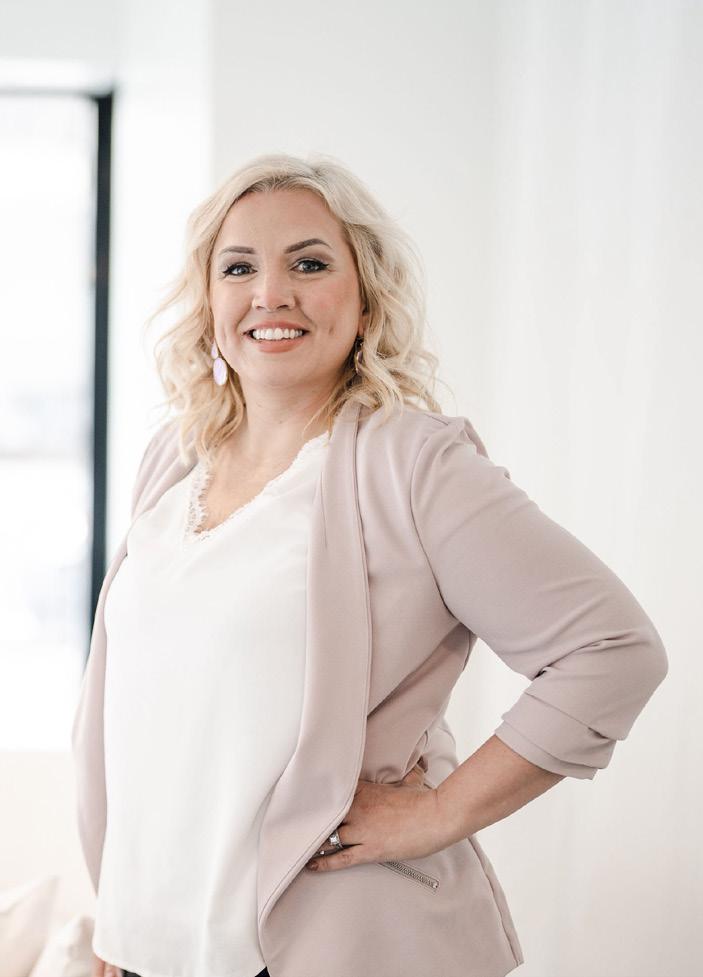
physical intercourse among teens.
“There could be several factors involved but communication is a huge piece,” Hurny-Fricano said.
It appears that communication difficulties among teens are long-term issues. As a professor at Onondaga Community College, Hurny-Fricano has noticed that freshmen “have great difficulty in engaging with each other. These are long-term communication issues if parents aren’t trying to break that cycle and encourage them to put their phones down.”
She encourages parents to engage their teens in conversation without phones present for 20 minutes at a time. Consistently taking that time can help them build interpersonal skills in a safe context. Practicing communication at home can lead to better skills among others.
“Parents need to be patient with their kids,” Hurny-Fricano said. “If they can start with five minutes, that’s a win. Try doing it in the car when there’s a captive audience.”
Understanding multiple sclerosis is crucial for patients and their families for several reasons, ranging from common myths or misunderstandings to the weight it causes on the caretakers.
The condition occurs when the immune system attacks the brain and spinal cord.
More than 1.8 million people are diagnosed, according to the World Health Organization. Knowledge about the disease helps individuals make informed decisions about treatment options and lifestyle adjustments. It enables patients to actively participate in the management of symptoms and make choices that promote overall well-being.
It can cause many different symptoms and affect any age, but young people are more commonly affected.
“Women are more affected than men. MS is common in the Northeastern United States, affecting about one in 265 people,” said physician Corey McGraw, chief-clinical neuroimmunology division and director of the Comprehensive Multiple Sclerosis Center at Upstate University Hospital.
“One study suggested that Syracuse, New York, has the highest rate of MS in the United States. Early identification and treatment reduces the risk of having serious symptoms and future disability,” McGraw said in an interview with In Good Health.
McGraw talks about five aspects of MS.
While symptoms vary wide-
ly, many of those seen by a majority of patients include fatigue, difficulty walking, numbness or tingling, muscle weakness, vision problems and issues with coordination and balance.
Individuals with MS may experience cognitive symptoms such as difficulty concentrating and memory problems. People of all ages can be affected, but it is more common in young adults and in females.
“Most people with MS experience episodes of neurological symptoms we call relapses. A typical relapse is a new symptom or a worsening symptom that develops over days and usually lasts days to weeks to months,” said McGraw. “We do not consider new symptoms to be relapses if they occur while you have an infection.”
Common symptoms of a relapse include blurry vision of one eye associated with pain in, around, or behind the eye, sometimes associated with change in color vision; double vision; dizziness or vertigo. In addition, drooping of the face, severe stabbing pain of one half of the face; weakness of the arms or legs and imbalanced walking.
Common misconceptions about MS include the belief that it is always a progressive and debilitating condition. In reality, the course varies with some individuals experiencing mild symptoms and long periods of remission.
“People sometimes think that it is an untreatable disease that will lead to wheelchair use and is fatal,” said McGraw. “We have highly
Dr. Anthony Fauci, who helped Americans navigate the HIV-AIDS epidemic and the COVID-19 pandemic, will reflect on his career in a memoir set for release this summer.
His publisher, Viking, announced that the book, titled “On Call: A Doctor's Journey in Public Service,” will go on sale June 18.
“I hope that this memoir will serve as a personalized document for the reader to understand better the daunting challenges that we have faced in public health over the past 40 years,” Fauci said in a statement released in February by Viking, the Associated Press reported. “I would also like to inspire younger individu-
als in particular to consider careers in public health and public service.”
Fauci, 83, served under eight presidents, from Ronald Reagan to Joe Biden, and spent 40 years of his career directing the National Institute of Allergy and Infectious Diseases at the National Institutes of Health.
In the 1980s, Fauci first came under fire from AIDS activists frustrated with the slow pace of research into a new and fatal virus, HIV, that was ravaging certain communities.
However, attitudes quickly changed as Fauci encouraged meetings between researchers and activists, as well as the participation of activists and people living with AIDS in the search for effective treatments.

effective treatments today and most people may not experience severe disability if diagnosed and treated. MS is not a fatal disease.”
3.Differences between MS and Alzheimer’s Disease MS and Alzheimer’s disease are distinct conditions. MS is an autoimmune disorder that primarily affects the central nervous system, causing a range of symptoms such as fatigue, difficulty walking and sensory disturbances. Alzheimer’s disease, on the other hand, is a neurodegenerative disorder characterized by progressive cognitive decline, memory loss and changes in behavior.
“We do not know the exact causes of many neurological diseases, including MS and Alzheimer’s disease. MS is a disease of an overactive immune system that causes damage to the insulation around the nerve cells, which can lead to damage and loss of the cells,” said McGraw. “Alzheimer’s disease is a degenerative disease of the brain due to deposits of abnormal proteins. MS often affects younger people, while Alzheimer’s disease tends to affect older people. Both can cause trouble in memory, thinking, and daily functioning dementia.”
4.Importance of Family Support Family support remains vital for individuals with MS as it can significantly impact their quality of life. Emotional support, understanding and assistance with daily activities contribute to the overall well-being. Family members can also play a
Fauci also worked with then-president George W. Bush to help create PEPFAR, the President's Emergency Plan for AIDS Relief, which has gone on to help save millions of lives globally. In 2008, Bush awarded Fauci the Presidential Medal of Freedom for “his efforts to advance the understanding and treatment of HIV-AIDS.”
But it was his second fight with a virus — COVID-19 — that Fauci will be most remembered for, be it good or bad.
While many Americans revere Fauci as the science-driven voice of reason that helped shepherd a bewildered nation through the COVID-19 years, others on the right fought hard against his advocacy for vaccines and infection control measures.
Fauci's contentious relationship with then-president Donald Trump spurred many anti-vaccine opponents to publish their own books that
chief-clinicalcrucial role in helping individuals adhere to treatment plans, manage stress and cope with the challenges that may arise.
“It is critical for any person living with a chronic disease to have loved ones who can support them. It can be very troubling to be diagnosed with a new illness and family support is a key factor,” he added.
In addition, having a family member with MS may increase the likelihood of developing the condition, but it does not guarantee it. Environmental factors such as viral infections and geographical location also play a role in the development of the condition.
Diagnosing MS can be challenging because its symptoms are diverse and may overlap with other medical conditions. The disease also presents differently in each individual, making it challenging to establish a definitive diagnosis. Multiple tests, including imaging studies and spinal fluid analysis, may be required and a thorough evaluation by a neurologist is often necessary.
“The main barrier to an early diagnosis of MS may be recognizing that a person’s symptoms require additional evaluation,” said McGraw. “MS is common so it should be a consideration for anyone experiencing neurological symptoms. When in doubt, undergoing an evaluation by an experienced neurology team is important.”

sought to undermine his reputation.
The financial deal behind Viking's publication has not been revealed, the AP said. Fauci is being represented by Washington attorney Robert Barnett, whose clients have included Bush and former Presidents Barack Obama and Bill Clinton, the news agency said.





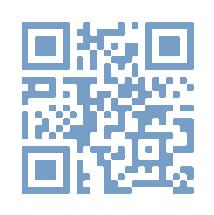

Nunn’s Home Medical Equipment is a family-owned business, opened in 1942, that offers a variety of DME products, along with oxygen and sleep therapy services. With over 80 years of experience as a medical equipment supplier, Nunn’s was honored to have been approached last year by the owners of Lady Jane Mastectomy Boutique, to step in and fill the role of supporting their clients. The owners were retiring and the business closing, but they wanted to ensure a smooth transition for the women they were committed to serving. Nunn’s has had certified mastectomy fitters on staff for over 10 years, along with private fitting rooms at both their Rome and Syracuse locations and was ready and able to take this responsibility on.
“We have been working with post-mastectomy patients for many years, but seeing how the ladies at Lady Jane supported and guided their clients through the process was phenomenal. We are honored and excited to continue their compassionate work and are doing everything we can to support these patients.,” Lorissa Hanford, Syracuse Branch Manager says. This is on top of the many other services, Nunn’s provides, including home oxygen, sleep therapy equipment and supplies, stair glides, lift chairs, and wheelchairs. Nunn’s is proud to provide these services and care to the local community and looks forward to many more years of service.

817
Syracuse, NY 13210
(315) 475-5181
www.nunnshme.com

The shortage of certified nurse assistants has challenged nearly all long-term care facilities since even before the pandemic.
These frontline workers provide essential services such as checking vital signs, helping move residents, assisting with grooming and other personal care and supporting nutrition.
Elemental Management Group, which operates The Gardens Assisted Living Community and Morningstar Residential Care Center in Oswego and other senior facilities in Upstate New York, has developed a 75-hour hybrid nurse aide training program designed to help expedite CNA training, enabling students to complete the program in less than three weeks instead of 164 hours across four to six weeks.
Elemental’s program has been available for nearly a year and has introduced hundreds of new CNAs into the health care system who otherwise would have been unlikely to have completed a standard CNA program.
“It’s our dream-come-true that we’re the first to get this up and going,” said Judy Harding-Staelens, registered nurse and licensed nursing home administrator and regional director of operations for Elemental.
Elemental manages long-term care and assisted living facilities in locations throughout New York. Five of Elemental’s facilities operate the program.
“The hybrid program has been exciting as we understand the generation seeking work now wants faster training and are more tech savvy,” Harding-Staelens said.
Students may sign up and complete the classes on a phone or laptop and schedule in-person times for completing the more clinical, handson aspects of the training. Instructors can monitor students’ progress and are always available for questions and feedback via email or in real time via chat. The program’s flexibility makes it accessible to people who are already working and those who have families and other obligations on their time.
“It helps focus on the social economic factors that our students face,”
said Peg Reith, registered nurse, regional nurse educator and CNA educator for Elemental. “There are young women joining in the workforce or middle-aged women. They can work at home while juggling their families, whether as caregivers or parents. This program has been very successful for them.”
It’s not that students of typical CNA programs lack the time to complete them. The big problem has been that the standard class times often conflict with when students have available time. Reith said that this timing and the length of the course caused many to drop out. Now Elemental runs a course every two weeks and can more quickly introduce CNAs into the workforce.
The hybrid CNA program can accommodate up to 20 students, providing sufficient instructors are available for clinical time. Some industrious students complete the program in a week, but most take about three if they work at it for four to six hours on weekdays. Students unable to finish in the prescribed three weeks can jump into the next session without having to redo material previously covered.
In addition to training its own CNAs, Elemental can offer outsourced training for other organizations, which offers Elemental another revenue stream beyond providing care.
Elemental has two packages. One provides training for educators who want to teach the hybrid CNA classes at their own facility. The other package completely handles the hybrid CNA classes as a third-party entity.
“We have a vested interest in this,” said Ryan Gilbartin, chief operating officer and licensed nursing home administrator at Elemental, which provides administrative support services to five nursing homes and two assisted living facilities.
Harding-Staelens said that the hybrid CNA program has enabled Elemental and other organizations to easily cross-train staff such as housekeeping and laundry personnel so
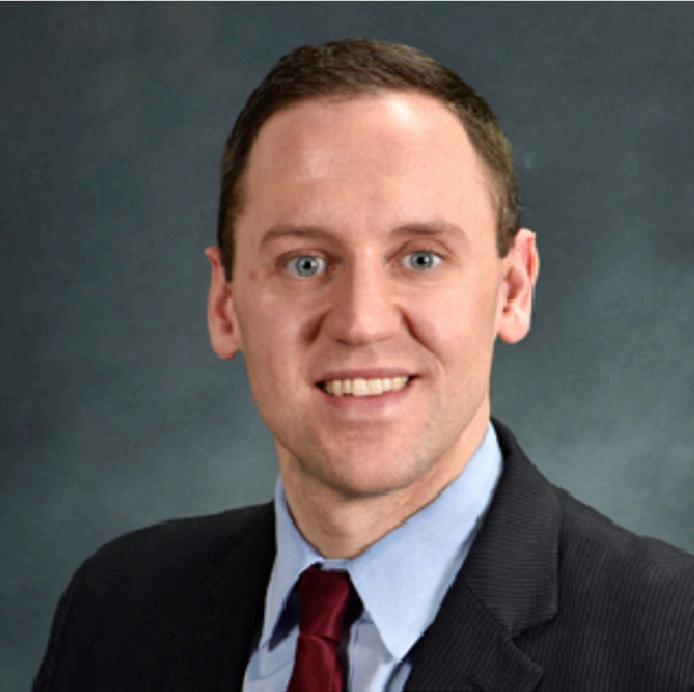
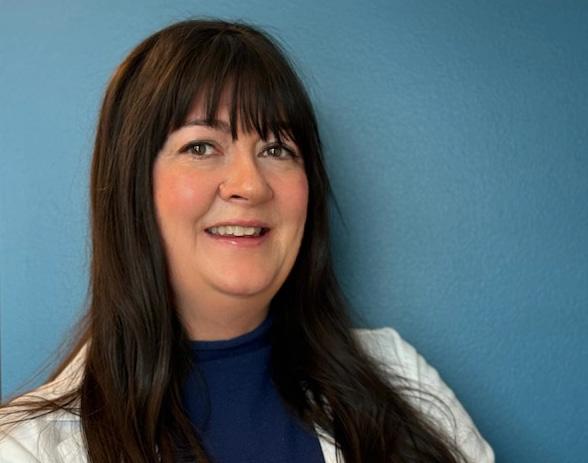
that they can also perform hands-on duties, such as feeding residents.
“It puts more hands on your residents as they can get more oneon-one time,” Harding-Staelens said. “It helps for the CMS Star Rating for number of people per resident. It goes up as to how many direct staff you have if they’re functioning as a CNA.”
Developed by the federal government, the CMS Five-Star Quality Rating System helps consumers compare long-term care options more easily. Legally, staff trained only as housekeeping or laundry workers are not permitted to provide any personal care to residents.
Reith said that occasionally, some people who are not familiar with the Moodle platform — or technology in general — don’t readily embrace the program. However, with a little coaching, she has not encountered any insurmountable problems. The program was written on a six-grade reading level to make it more accessible to students.
“I think it’s opened a door for us,” Harding-Staelens said. “Our goal is to get approval with the Department of Education to keep on going. The opportunities are endless.”
The next goal is launching a program to teach more types of skilled programs in a hybrid, accelerated model. In addition to helping alleviate the CNA staffing crisis, Elemental’s program provides an additional revenue stream to the company, which helps in light of stagnant Medicaid reimbursement for the past 15 years in the face of soaring inflation.
The initial start-up cost to train a facility’s educator is $7,500 and for each following month, $1,500. For organizations that want to outsource the entire program, it’s $1,200 per student.
“It’s very exciting,” Harding-Staelens said. “It’s a huge collaboration. I get to see a lot of families affected as they can gain steady employment. There’s joy in the life-changing things we’ve done for them.”
Dear Savvy Senior,
I have arthritis and hand tremors that affects my grip strength and makes brushing my teeth difficult. I’ve read that electric toothbrushes can help make the job easier. Can you make any recommendations for seniors?
Arthritic Alice
Dear Alice,
For seniors who suffer from arthritis or have other hand weaknesses or tremors, an electric toothbrush is an often turned to solution for keeping your teeth clean. At the push of a button, an electric toothbrush will do everything but shake, rattle and roll to do the cleaning for you, and most come with a wide, slightly weighted handle and rubberized grip that make them easier and more comfortable to hold on to.
With dozens of different electric toothbrushes on the market today, here are several points to consider to help you choose:
• Cost: The cost of electric toothbrushes will range from $10 for a model with replaceable AA batteries to more than $200 for some models with rechargeable lithium-ion batteries, multiple brushing modes, smartphone integrations and other features. How much are you willing to spend?
• Brushing action: Brush heads tend to be either “spinning” (they rotate very fast in one direction, then the other, and bristles may pulsate in and out) or “sonic” (they vibrate side to side). Both methods are effective and a matter of personal preference.
• Electric versus battery: Choose a brush with a built-in rechargeable battery and an electric charging station. They’re much more convenient and cost effective than toothbrushes that use replaceable batteries.
• Brushing timer: Since most dentists recommend brushing for two minutes (most adults average about 45 seconds), get an electric toothbrush with a built-in brushing timer — most have them. Some brushes will even split the two minutes onto four 30-second intervals and will notify you when it’s time to switch to a different quadrant of your mouth.
• Extra features: Most higher-priced electric brushes come with extra features like cleaning modes, pressure sensors, a charge-level display and more. There are even “smart” toothbrushes that connect to
a smartphone or tablet via Bluetooth to track brushing habits. What extra features do you want?
According to Consumer Reports — an independent, nonprofit product testing and research organization –the top electric toothbrushes for 2024 are the Oral-B iO 7 Series ($150); Oral B Genius X 10000 ($200); Bruush Electric Toothbrushes ($95); and the Philips Sonicare ProtectiveClean 6100 ($120). And the top rated low-cost electric toothbrush is the Brightline 86700 ($30).
The New York Times Wirecutter, another popular product reviewing service, rates the Oral-B Pro 1000 ($40) as the best electric toothbrush followed by the Philips Sonicare 4100 ($40).
If flossing has become challeng ing too, a good alternative to tra ditional string floss are floss picks. These are disposable plastic-handle tools that have floss threaded onto them, which makes them easier to hold and use. DenTek, Oral-B and others sell packages for a few dollars or check out the Listerine UltraClean Access Flosser, which comes with a toothbrush-like handle for a better reach.
Some other flossing products to consider that are easy on the hands are the WaterPik Power Flosser ($15), which gently vibrates to dislodge embedded food particles between your teeth. Or consider a water floss er, which use high-pressured pulsat ing water to remove food particles and plaque and will stimulate your gums in the process. WaterPik offers a variety of water flossing products at prices ranging between $40 and $140, as does Oral Breeze, which offers the Shower Breeze and Quick Breeze water flossers (around $40) that connects directly to your faucet or shower head.
All of these dental care products can also be found at your local pharmacy or retailer that sells personal care items or online.


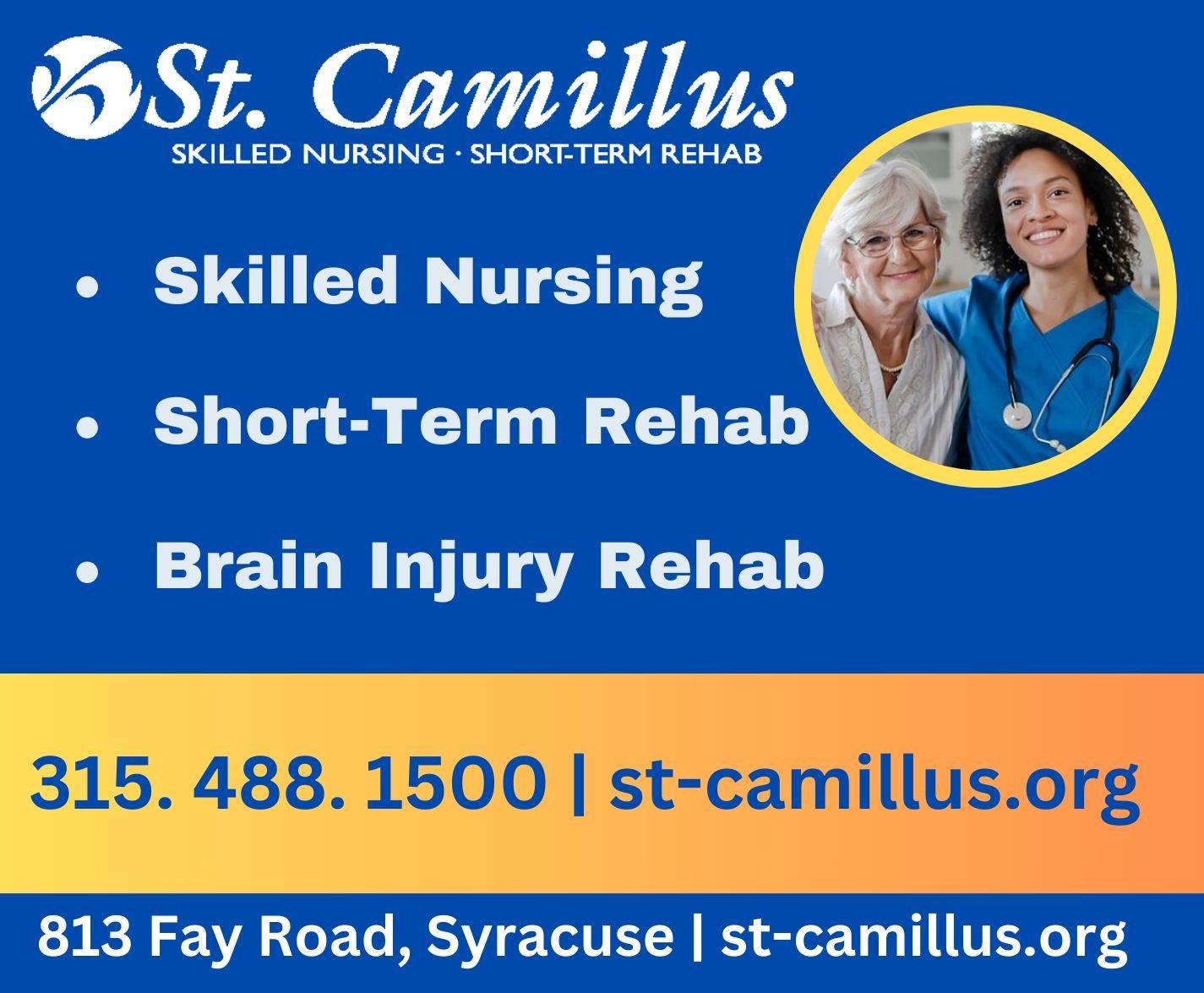


Send your senior questions to: Savvy Senior, P.O. Box 5443, Norman, OK 73070, or visit SavvySenior. org. Jim Miller is a contributor to the NBC Today show and author of “The Savvy Senior” book.

Social Security works with the Office of the Inspector General (OIG) to protect you from scams that use Social Security as bait. Section 1140 of the Social Security Act allows OIG to impose severe penalties against anyone who engages in misleading Social Security-related advertising or imposter communications.
For example, the OIG may impose a penalty against anyone who:
• Mails misleading solicitations that appear to be from or authorized by Social Security.
• Operates an imposter website or social media account designed to look like it belongs to or is authorized by Social Security.
• Sends emails or text messages
or makes telephone calls claiming to be from Social Security.
• Sells Social Security’s free forms, applications, and publications without our written approval.
• Charges a fee for a service that Social Security provides free of charge without providing a clearly visible notice that Social Security provides the service for free.
If you receive a suspicious Social Security-related advertisement or imposter communication, please let us know immediately. We encourage you to report potential scams to the OIG at oig.ssa.gov. You can also send an email to OIG.1140@ssa.gov.
Please try to capture as much information about the communication as you can. Here’s what you can do:

• For suspicious websites or social media accounts, take a screenshot of the webpage. Note the website address or social media link — and how you came across it.
• For emails and text messages, capture the entire message and any message links.
• For U.S. mail, retain the complete communication, including the outside envelope and all inserts.
• For telephone calls, note the caller identification phone number and any company name or callback
Q.: I am 57 years old and I currently receive Social Security disability benefits. Can I still get my regular Social Security retirement benefits when I reach full retirement age?
A.: If you are still receiving Social Security disability benefits when you reach your full retirement age, we will automatically switch you from disability benefits to retirement benefits at that point. The money amount will remain the same. For more information on disability benefits, visit www.ssa.gov/benefits/disability.
Q.: My doctor said he thinks I’m disabled. Who decides if I meet the requirements for Social Security disability benefits?
A.: We first will review your application to make sure you meet some basic requirements for Social Security disability benefits, such as whether you worked enough years to qualify. Then we will send your application to the disability determi-

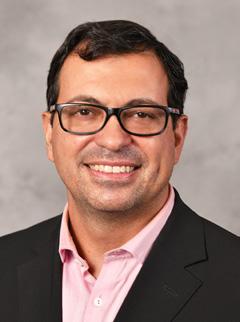
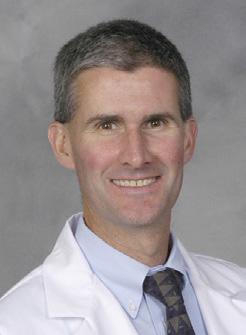
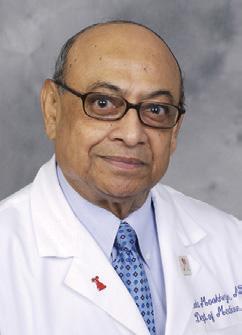
number that the caller or recorded message provides.
This information will help OIG locate the source of the suspicious communication. You can review Section 1140 at www.ssa.gov/OP_ Home/ssact/title11/1140.htm. You can also check out our publication, “What You Need to Know About Misleading Advertising,” at www. ssa.gov/pubs/EN-05-10005.pdf.
Please share this information with friends and family and help us spread the word on social media!
nation services office in your state, often called the “DDS” or “state agency.” Your state agency completes the disability decision for us. Doctors and disability specialists in the state agency ask your doctors for information about your condition. They consider all the facts in your case. They use the medical evidence from your doctors and hospitals, clinics, or institutions where you have been treated and all other information.
The state agency staff may need more medical information before they can decide if you are disabled. If more information is not available from your current medical sources, the state agency may ask you to go for a special examination. We prefer to ask your own doctor, but sometimes the exam may have to be done by someone else. Social Security will pay for the exam and for some of the related travel costs. Learn more at www.ssa.gov/disability.
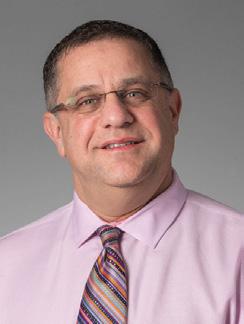



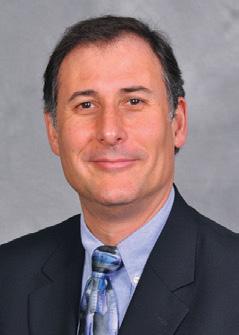
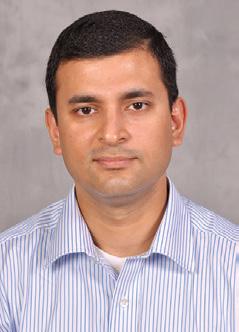


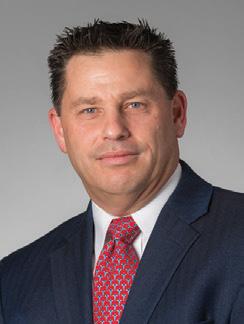
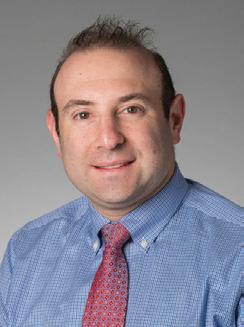


Chaudhuri, MD
Hani Kozman, MD
Sakti Pada Mookherjee, MD
Amy Tucker, MD
Daniel Villarreal, MD
Kiran Devaraj, MD
Srikanth Yandrapalli, MD, FACC
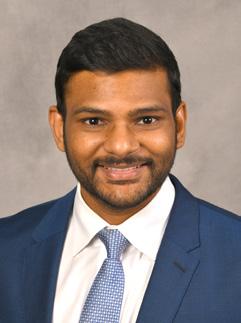
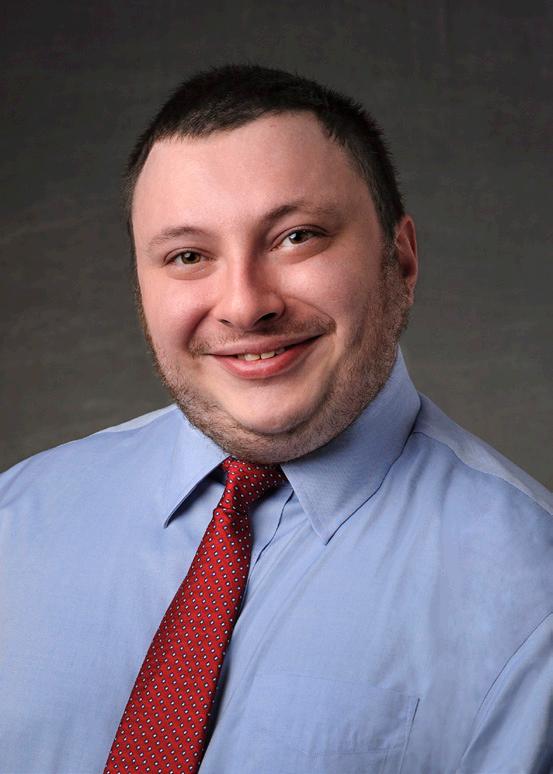
St. Joseph’s Physicians
Ben Shapiro
announced physician Benjamin G. Shapiro has joined St. Joseph’s Health Hospital as a hospitalist. A board-certified physician, Shapiro completed his residency at St. Joseph’s Health where he will continue to practice.
As a hospitalist, Shapiro cares for patients from the time they enter the hospital to the time they are discharged. He manages diagnosis, treatment and coordination of care of needed specialists.
Having completed his residency in family medicine, Shapiro is wellequipped to provide this wide scope of care to all patients.
“As a native of Syracuse, I am excited to continue caring for the patients in our community and those from surrounding areas as a hospi talist,” said Shapiro. “Having com pleted my residency at St. Joseph’s Health, I know firsthand the excep tional physicians, nurses and staff we have, and I am thrilled to be a part of this team.”
University Nevada’s College of Osteopathic Medicine in Henderson, Nevada. He completed his under graduate studies at Union College in Schenectady, receiving a Bachelor of Science degree in biological sciences with a minor in history.
While attending Union College, he appeared on the dean’s list, was an associate member of the Sigma Xi Scientific Research Honor Society, and was awarded departmental hon ors for his thesis.
Oswego Health’s medical staff has added three new clinicians to its team.
ed to gastroenterology and specialized hepatology treatments.
• Family nurse practitioner Jamie
Wallace will join the team at Oswego PrimeCare. Originally from Mexico in Oswego County, Wallace earned her Master of Science as a family nurse practitioner in 2023 from Wegmans School of Nursing at St.
John Fisher
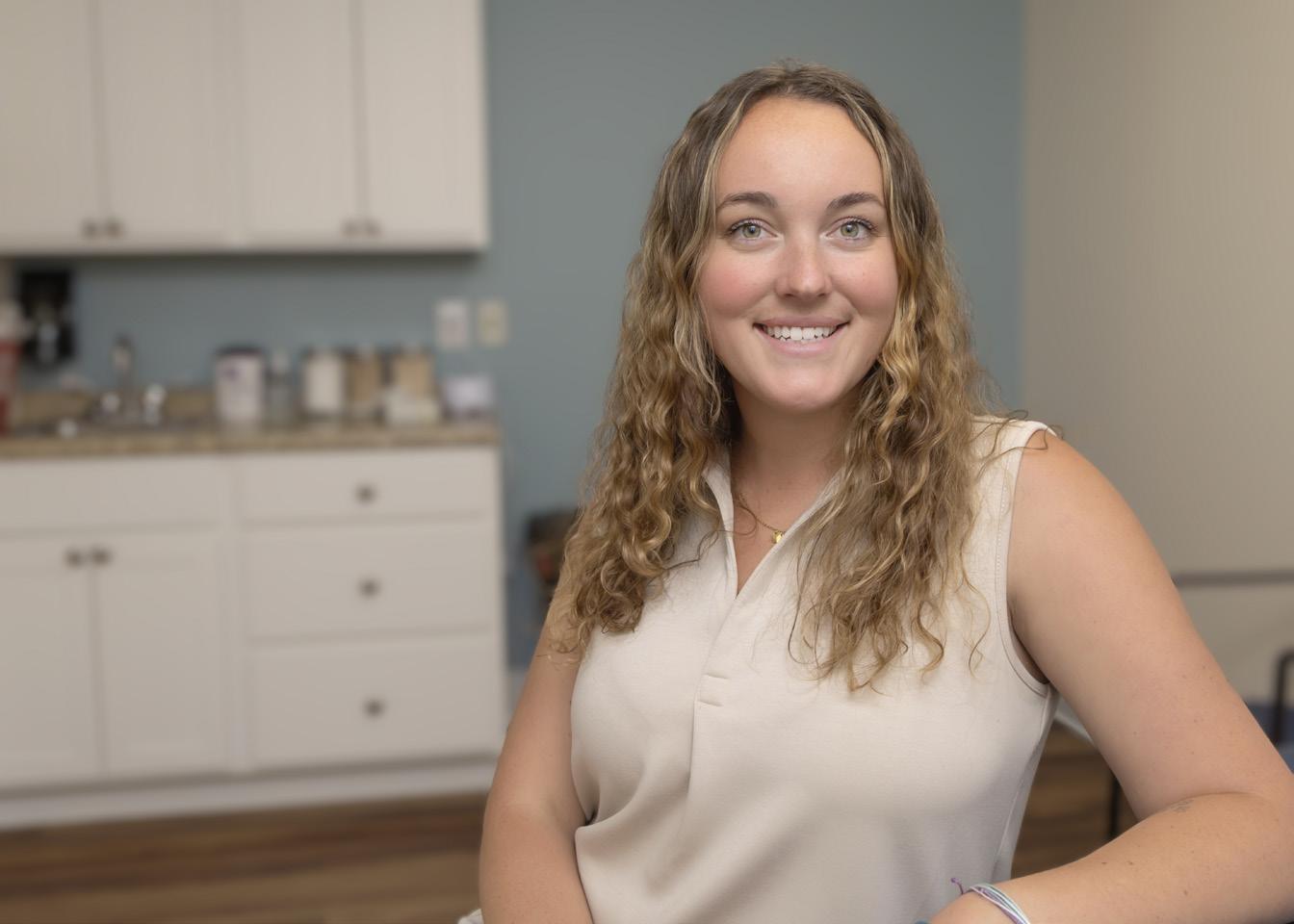
nurse working throughout Central New York. In 2016 she transitioned to provide direct care to adult and pediatric patients experiencing a psychiatric crisis, a field she soon discovered was her passion. Most recently she was a psychiatric nurse practitioner for TeamHealth in Auburn.
Crouse Medical Practice welcomes two new providers in general surgery and primary care.
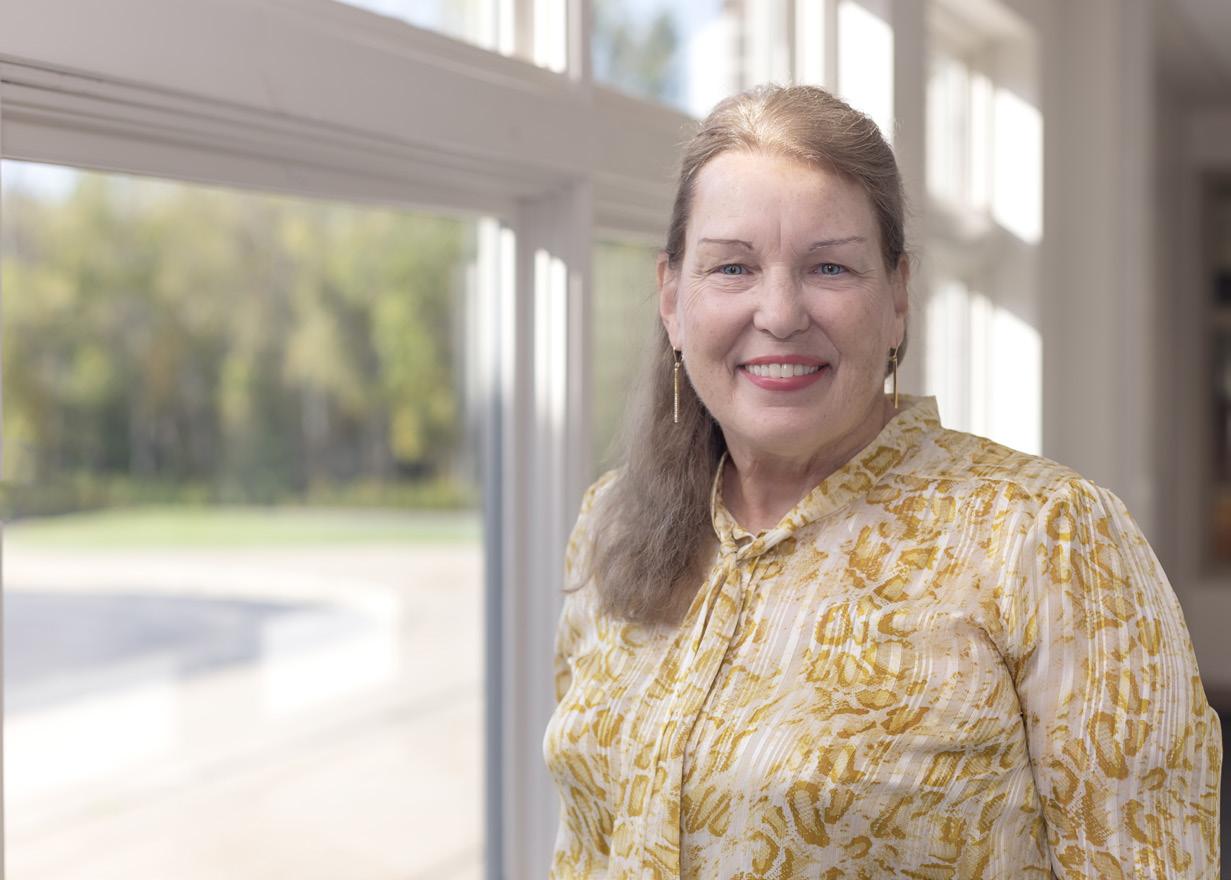
Shapiro received his Doctor of Osteopathic Medicine from Touro
Sharon Snover will join the Center for
2006 from Upstate Medical Universi ty and her Bachelor of Science in nursing in 2003. Snover brings over 30 years of experience to the team as she has extensive experience working with veterans at the Department of Veteran Affairs, and 15 years dedicat
University and her Bachelor of Science in nursing in 2018. Wallace is no stranger to Oswego Health as she completed 150 hours of her clinical rotations at the Fulton Urgent Care Center. Wallace has worked as a registered nurse at Strong Memorial Hospital since 2019 in both their
CMP General Surgery welcomes Amanda Kenyon to the practice. She is a Syracuse native board-certified in family medicine. She received her bachelor’s degree from SUNY Canton and her master’s degree from Simmons University in Boston.

With a goal of providing educational and career advancement resources and opportunities for its 3,200 employees, Crouse Health has established the Crouse Workforce Development and Training Center.
Located on 7 West Tower, the dedicated center is designed to support Crouse’s workforce development strategic focus for all Crouse employees.
In partnership with the 1199SEIU Training and Upgrading Fund (TUF) the center will be staffed two days a week by TUF representatives. They will provide union members with workshops, tutoring and resources to help staff in expanding their knowledge base, prepare for classes leading to an advanced degree, or assist in gaining qualifications for job advancement within our organization.
“Our goal is to invest in our current workforce and attract and retain employees who are passionate about the Crouse culture and want to develop or build on the skills and resources needed to advance within our organization,” says Crouse Health President and CEO Seth Kronenberg, MD, adding that services provided through the training site will meet the education and staff development needs of all Crouse employees — both union and
non-union.
“We want our employees to stay at Crouse for their entire career. This program will give them the tools and support to do that,” says Kronenberg.
“The opening of this training center is a true testament to the partnership between Crouse Hospital and 1199SEIU. Jointly there has been a commitment to offer educational and career advancement opportunities to Crouse employees, which in turn will have a lasting impact on their everyday lives,” says Kevin Lockhart, 1199SEIU CNY Area Vice President.
The workforce development initiative will help both Crouse and its employees by: promoting career development and advancement; improving communication and collaboration among employees; increasing job satisfaction; enhancing workplace culture, delivering higher-quality care; increasing employee retention, driving change and innovation; increasing current skillset and knowledge.
“With this initiative we’ll be focusing on the recruitment and retention of talented, engaged and diverse clinical and support staff to ensure the long-term success of Crouse and our employees, now and into the future,” says Kronenberg.
Mental Health & Wellness for Youth is Shannon Woods. Woods is from Cato and earned a Master of Science in nursing in 2018 from Upstate Medical University and her Bachelor of Science in biology in 2009. Woods has over 12 years of experience as a registered
In primary care, Crouse Medical Practice welcomes physician Hdayatu Salawu to its downtown office. Salawu received her medical degree from SUNY Upstate Medical University and completed her residency at United Health Services Hospital in Johnson City. She is a native of the Ivory Coast and is welcoming new patients.

ConnextCare, a major provider of comprehensive, affordable and premier health care in Oswego County, recently honored community leaders who helped the organization during the last several decades. The ball had historical significance for the organization as it was first hosted in 1974 by the Pulaski Junior Civic League, as an opportunity to raise money for NOCHBI — Northern Oswego County Health Building, the pre-
ConnextCare, Michael Backus, Oswego Health’s president and executive officer, and Ellen Host, former ConnextCare chairwoman.

Erika Taylor has been named chief of University Police. She has served as interim chief since March 2023.
The appointment, effective Feb. 15, was announced by Eric Smith, senior vice president for Finance and Administration.
“Chief Taylor is a thoughtful, experienced law enforcement professional who has a deep commitment to Upstate and the greater community,” said Smith. “I am pleased that she will continue to serve our campus and its many stakeholders as she leads our dedicated team of law enforcement officers.”
As chief of University Police, Taylor oversees a staff of more than 40 employees, including 22 police officers, and more than 100 contract security personnel.
Taylor, who has more than 12 years of experience in law enforcement, joined Upstate in 2012. In 2022, she was promoted to assistant chief of University Police before being appointed interim chief in March 2023.
Taylor has multiple certifications and training in all areas of law enforcement, including law enforcement ethics, critical incident management, and fair and impartial policing. She is a graduate of the International
NYS Assemblyman Bill Magnarelli, second from left, recently stopped by Crouse Health for an update from CEO Seth Kronenberg, MD, (far right) and tour of Crouse’s Baker Regional Neonatal Intensive Care Unit (NICU). As a state-designated regional perinatal
Association of Chiefs of Police Women’s Leadership Institute, a Central New York Regional Representative for the New York Women in Law Enforcement Organization and is currently pursuing a FBI LEEDA (Law Enforcement Executive Development Association) trilogy certification.
Taylor has received the Excellence in Service Award and the President’s Employee Recognition Award for Campus Team of the Year.
Taylor holds an associate’s degree in criminal justice and a bachelor of technology degree in law enforcement leadership from SUNY Canton. Taylor is a 2012 graduate of the Black River/St. Lawrence Valley Police Academy.
Taylor previously worked for the St. Lawrence County Office of Emergency Services. She resides in Baldwinsville.
center, Crouse’s outstanding clinical and support team provides lifesaving care to more than 1,000 premature and critically ill infants every year. Also joining the tour were nursers Lily Barres, NICU nurse manager (far left) and Betty O’Connor, director of women’s–infants services (right).

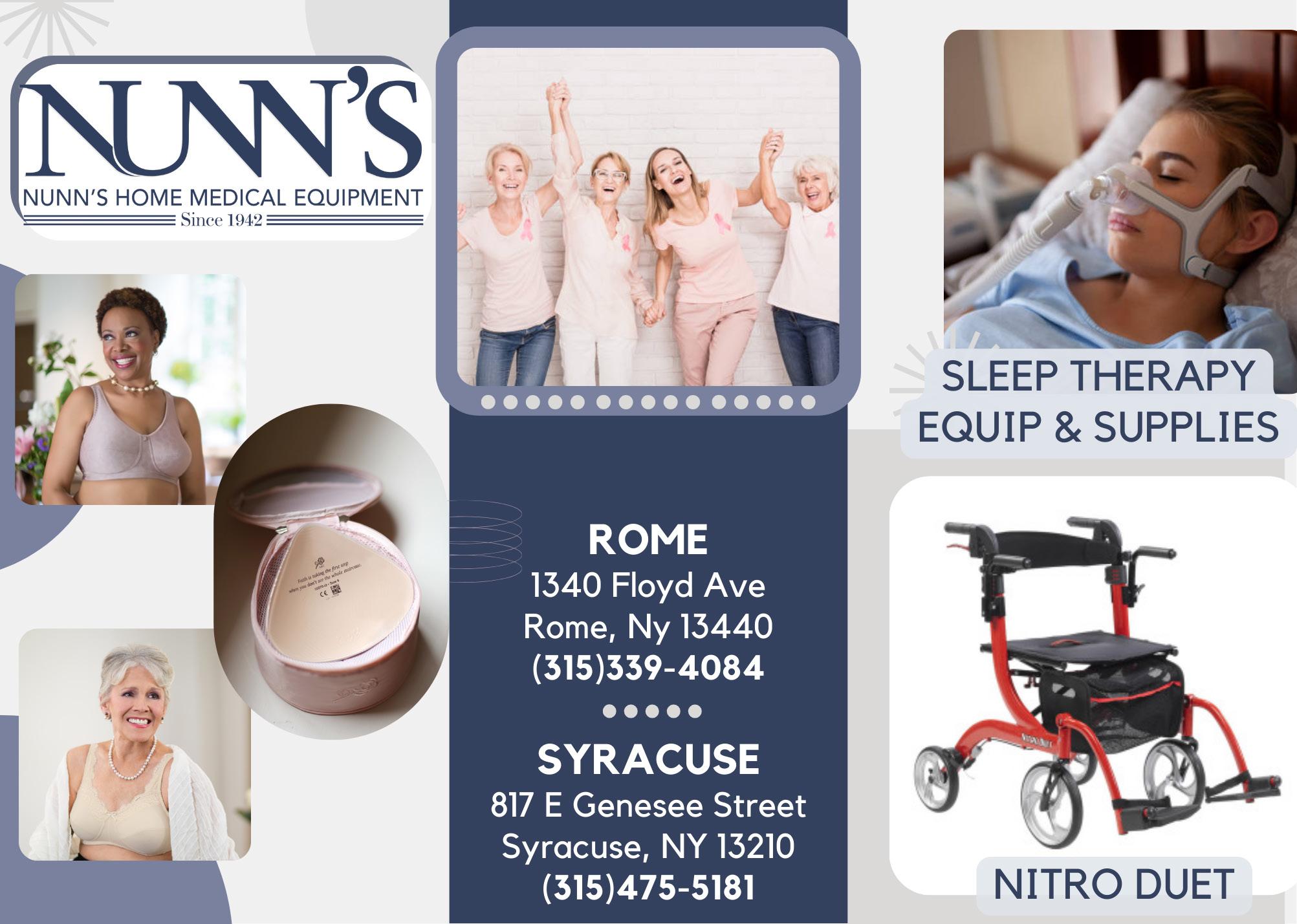










When you’re in pain or feeling sick, we want to help you find the right care, right when you need it. There are several ways to seek care:
PRIMARY CARE DOCTOR
When possible, this is the best place to start. Your primary care doctor will know your health history and can help with the best next steps to start feeling better.
TELEMEDICINE
This is a great option when you can’t visit your doctor in person. Your primary care doctor might offer telemedicine visits but if they don’t, we’ve partnered with MDLIVE* for 24/7 virtual care.
URGENT CARE
Urgent care can be a good option for in-person care when your doctoris not available. Urgent care centers are designed to treat non-emergent conditions, like sprains and strains, colds and flu, cuts and lacerations, and can perform x-rays and lab testing.
EMERGENCY ROOM
If you’re experiencing a life-threatening event, call 911 or go straight to the nearest emergency room.